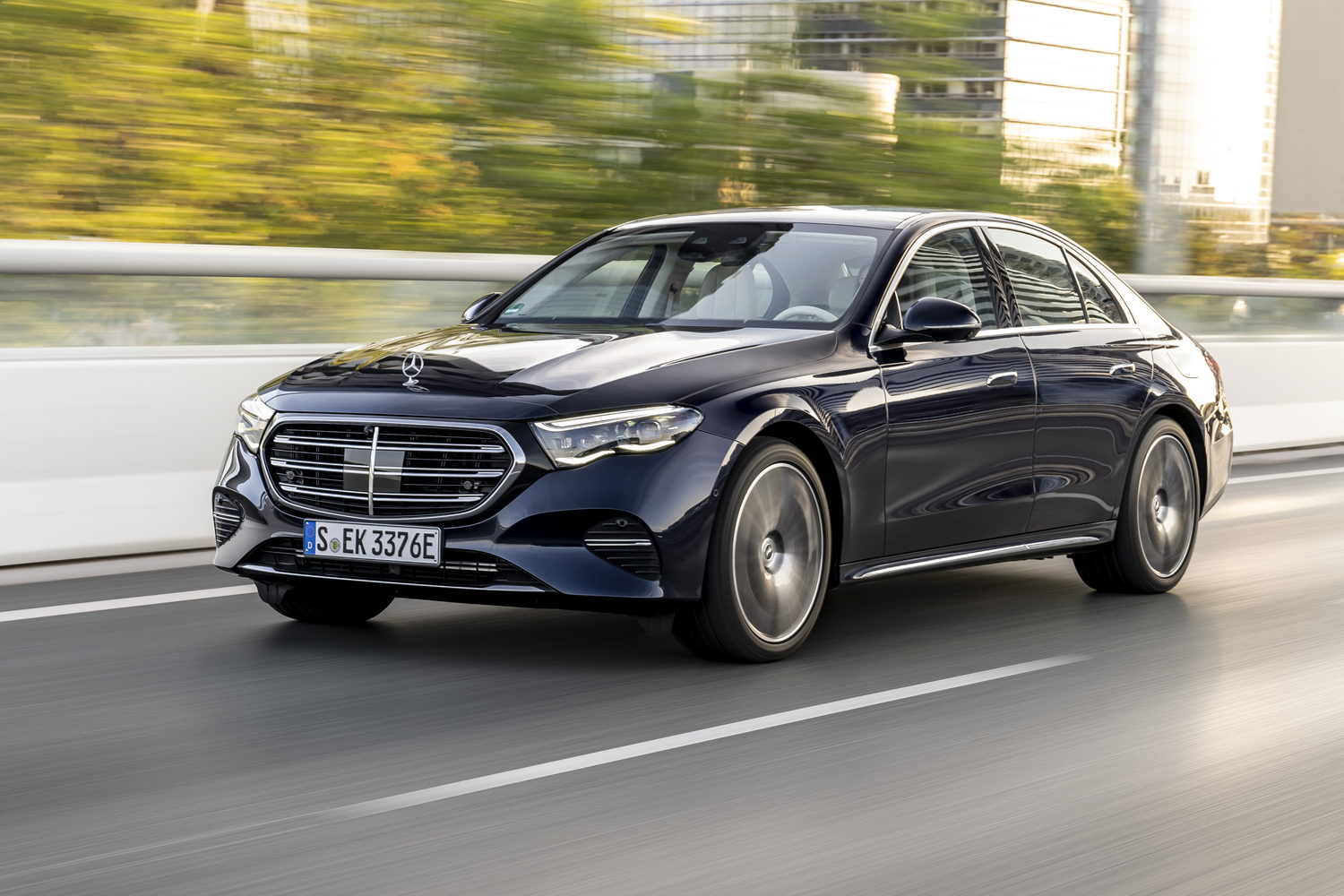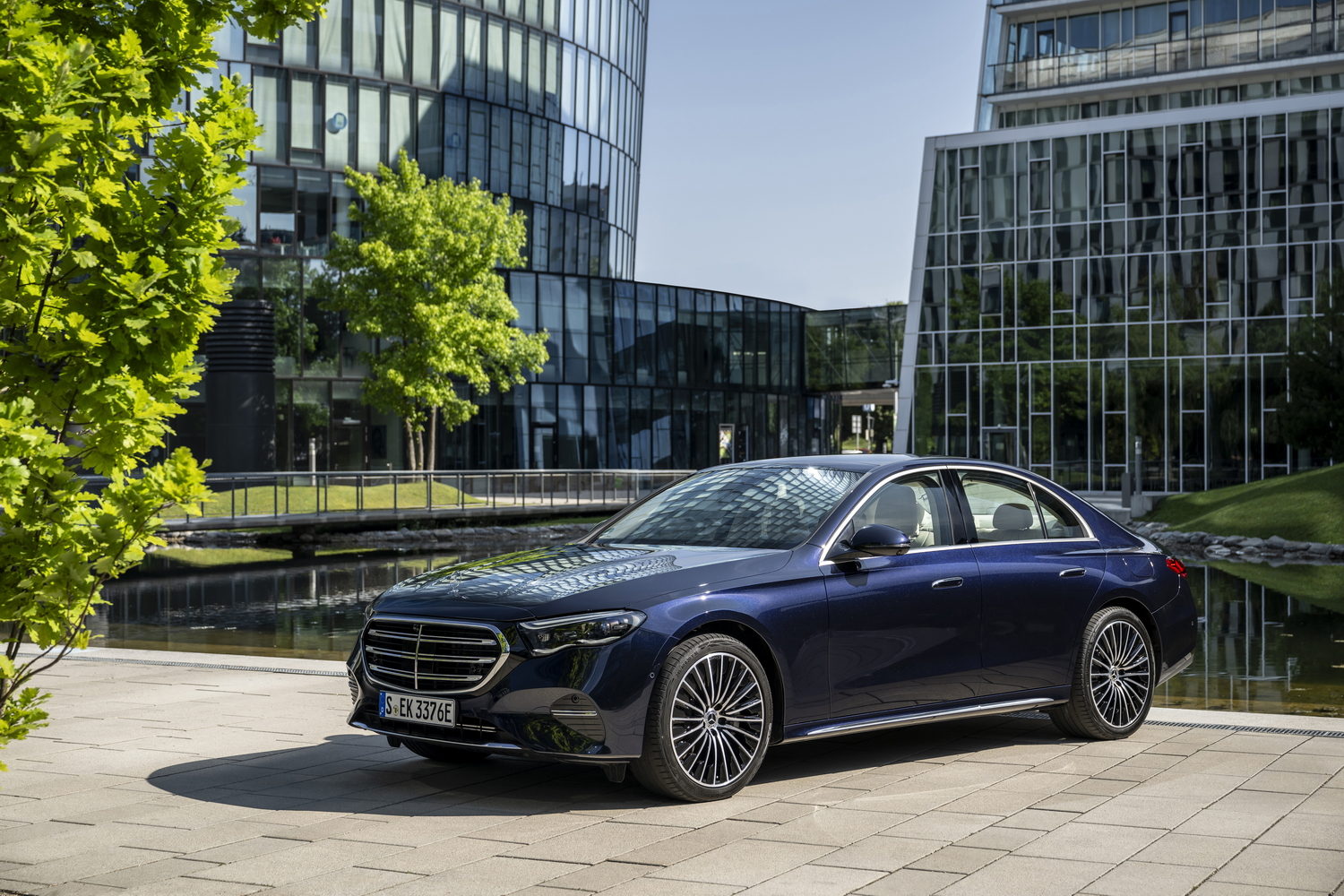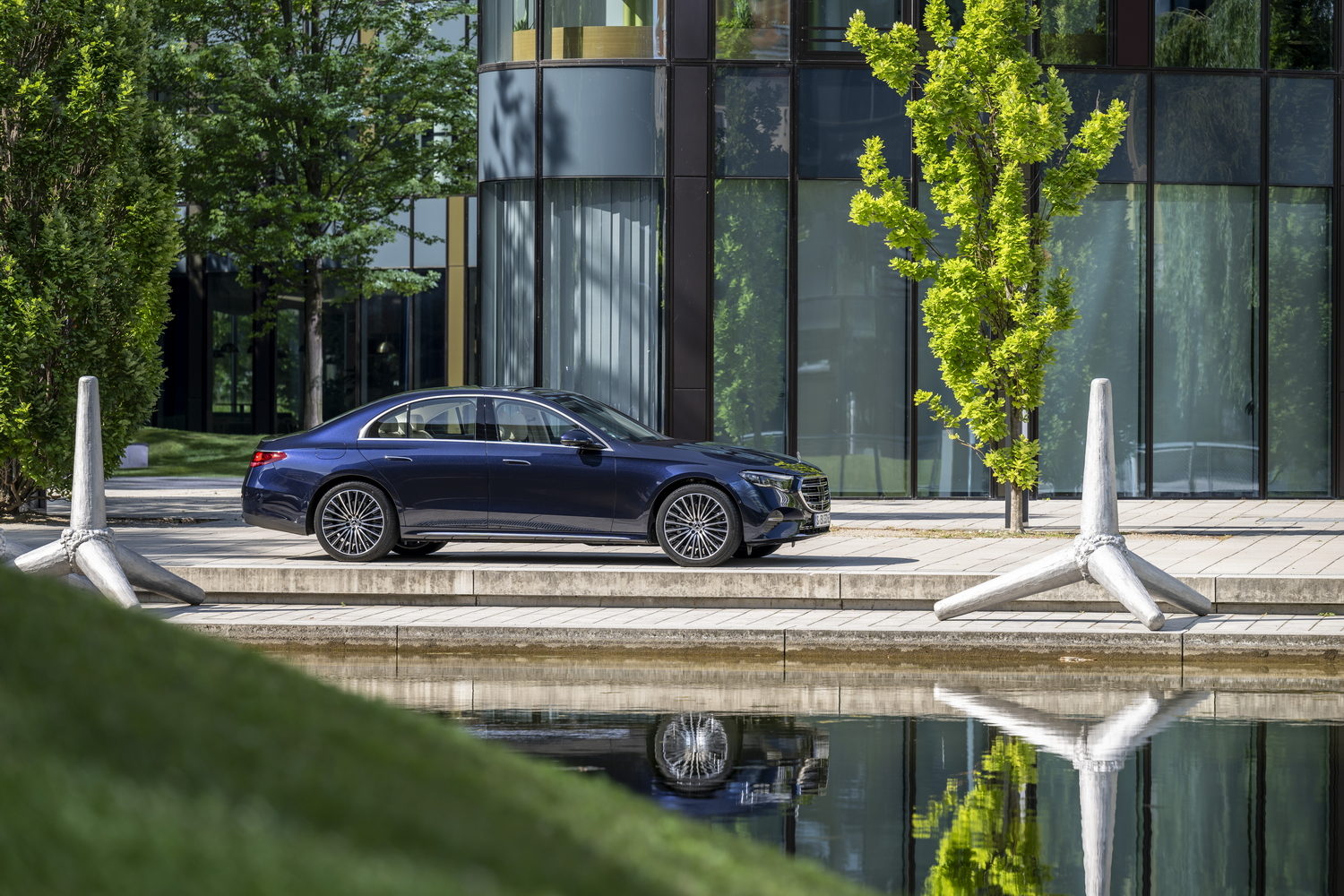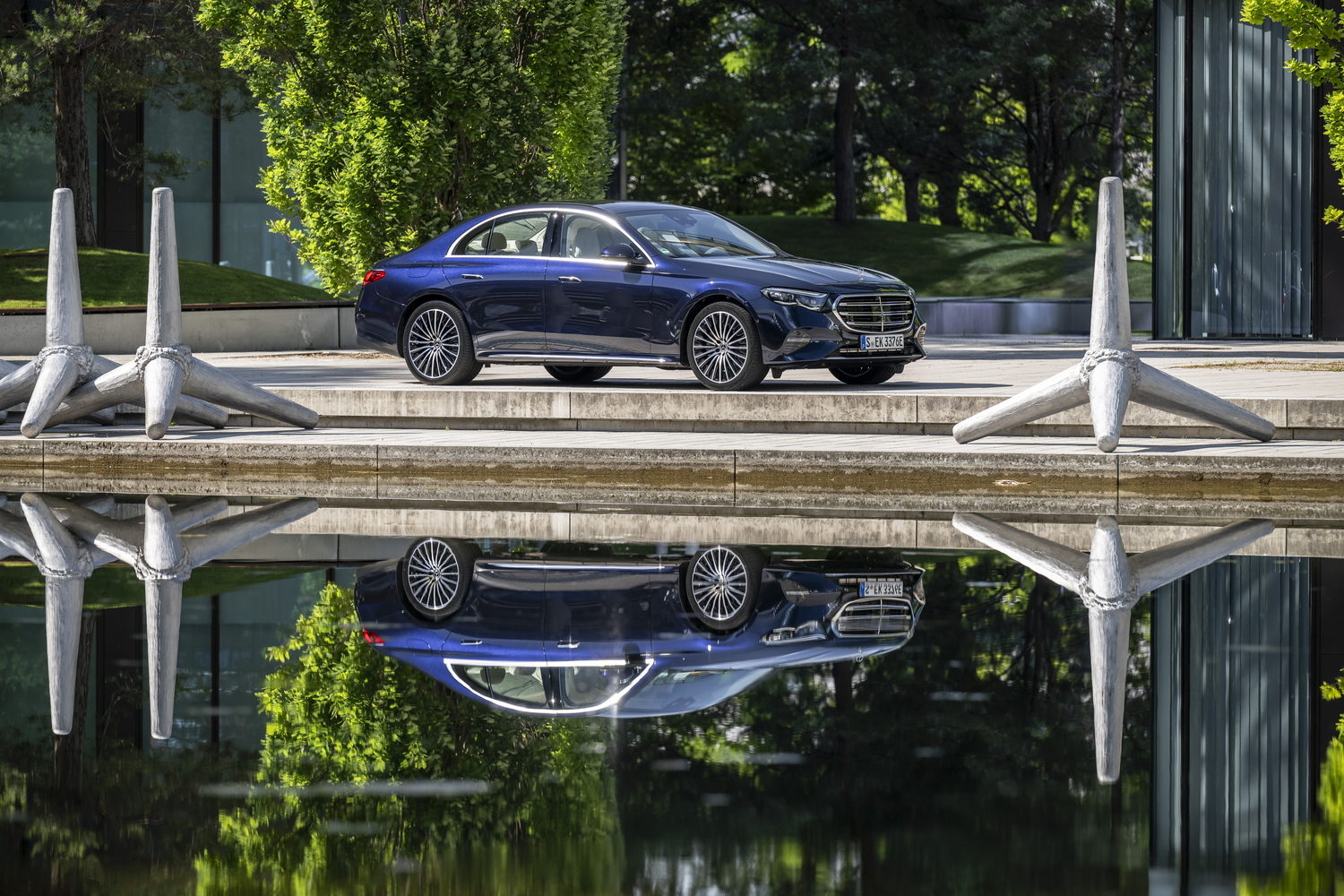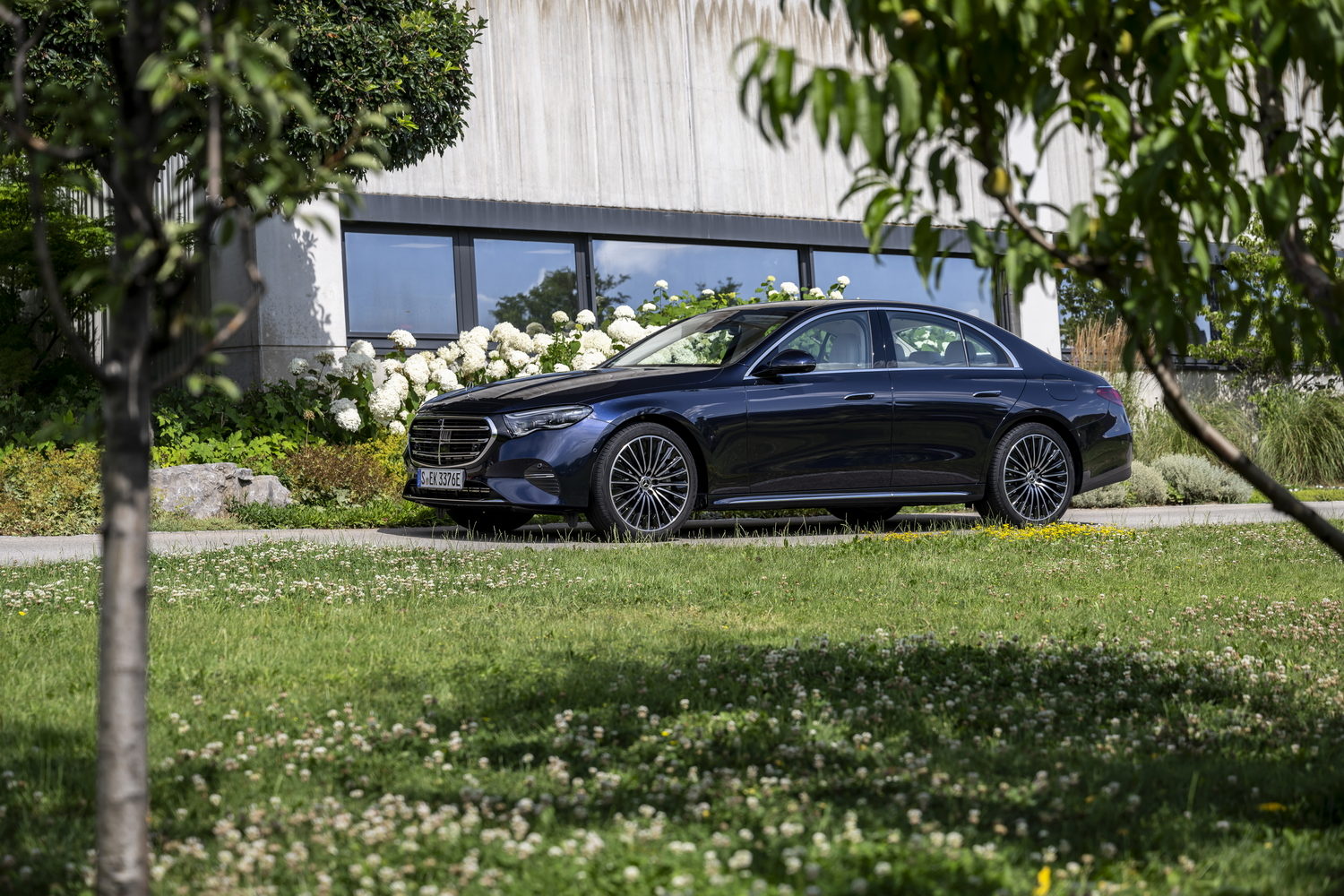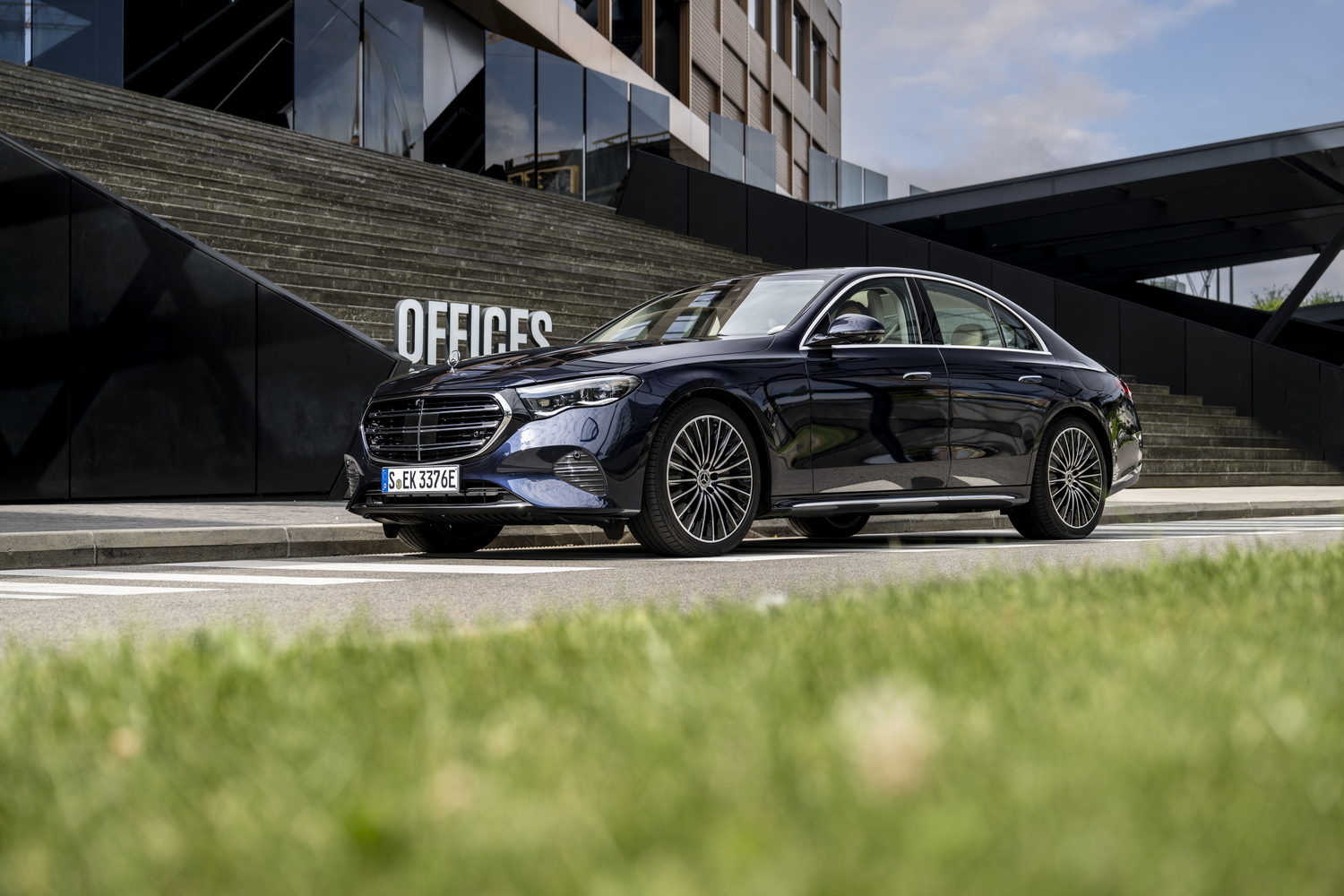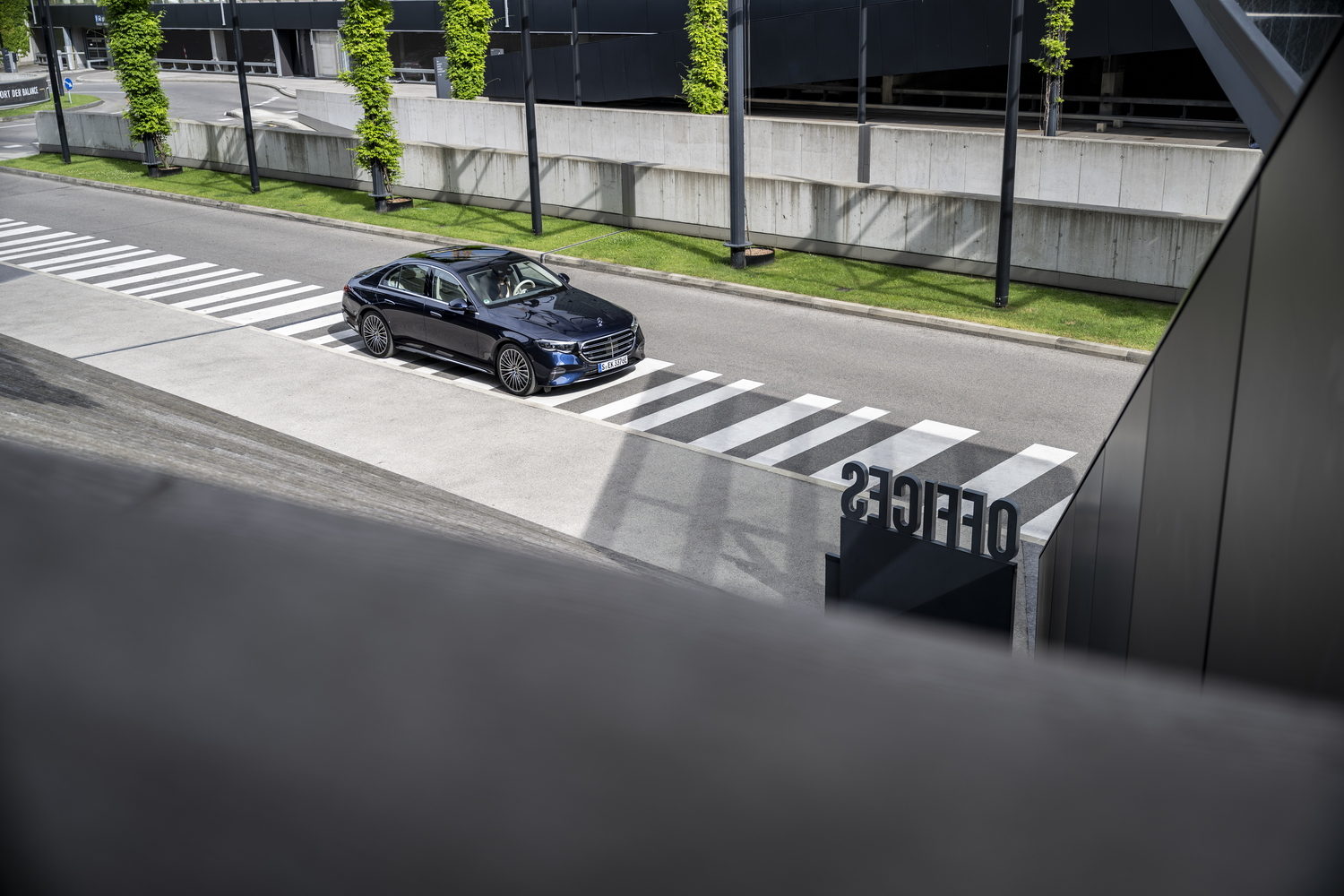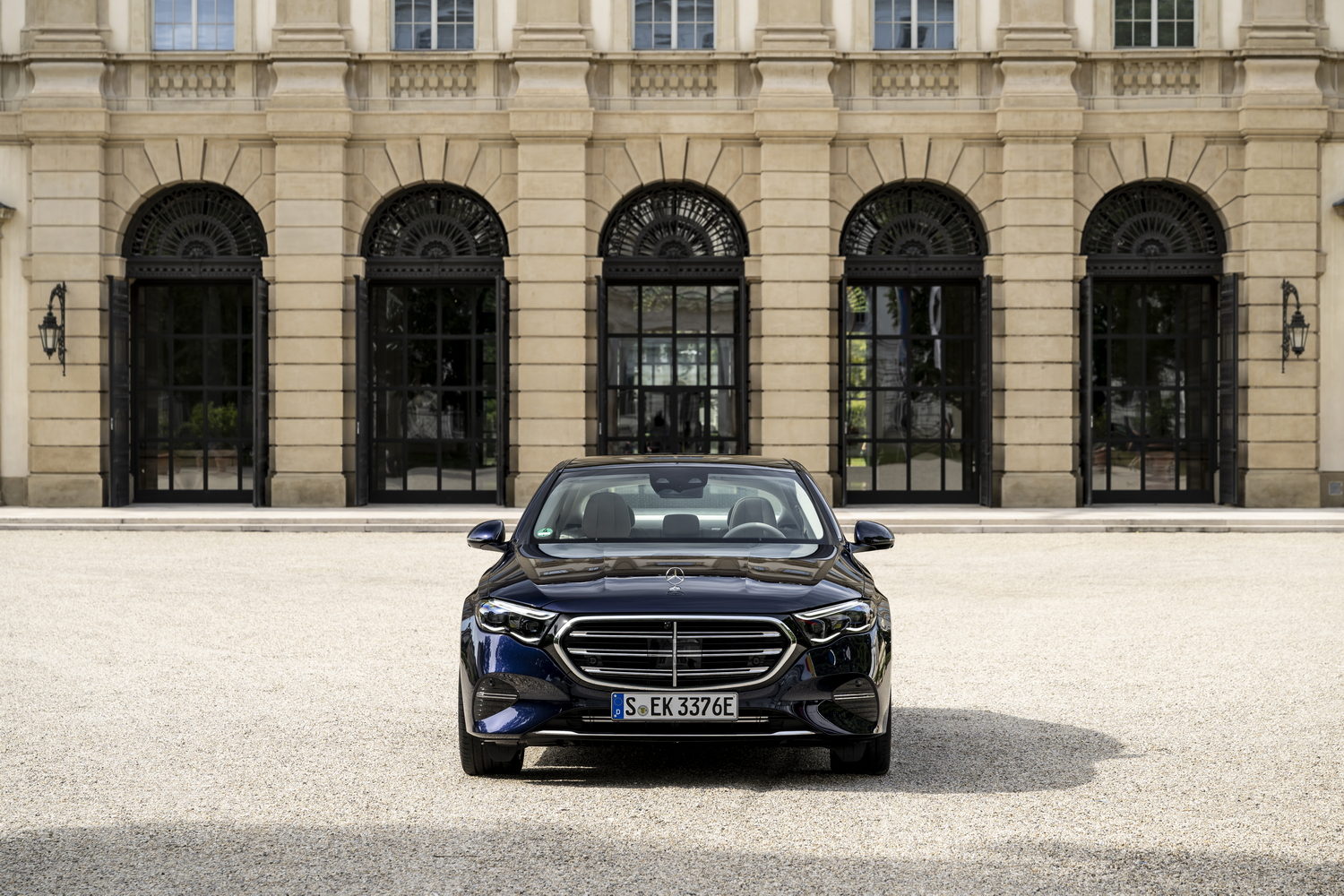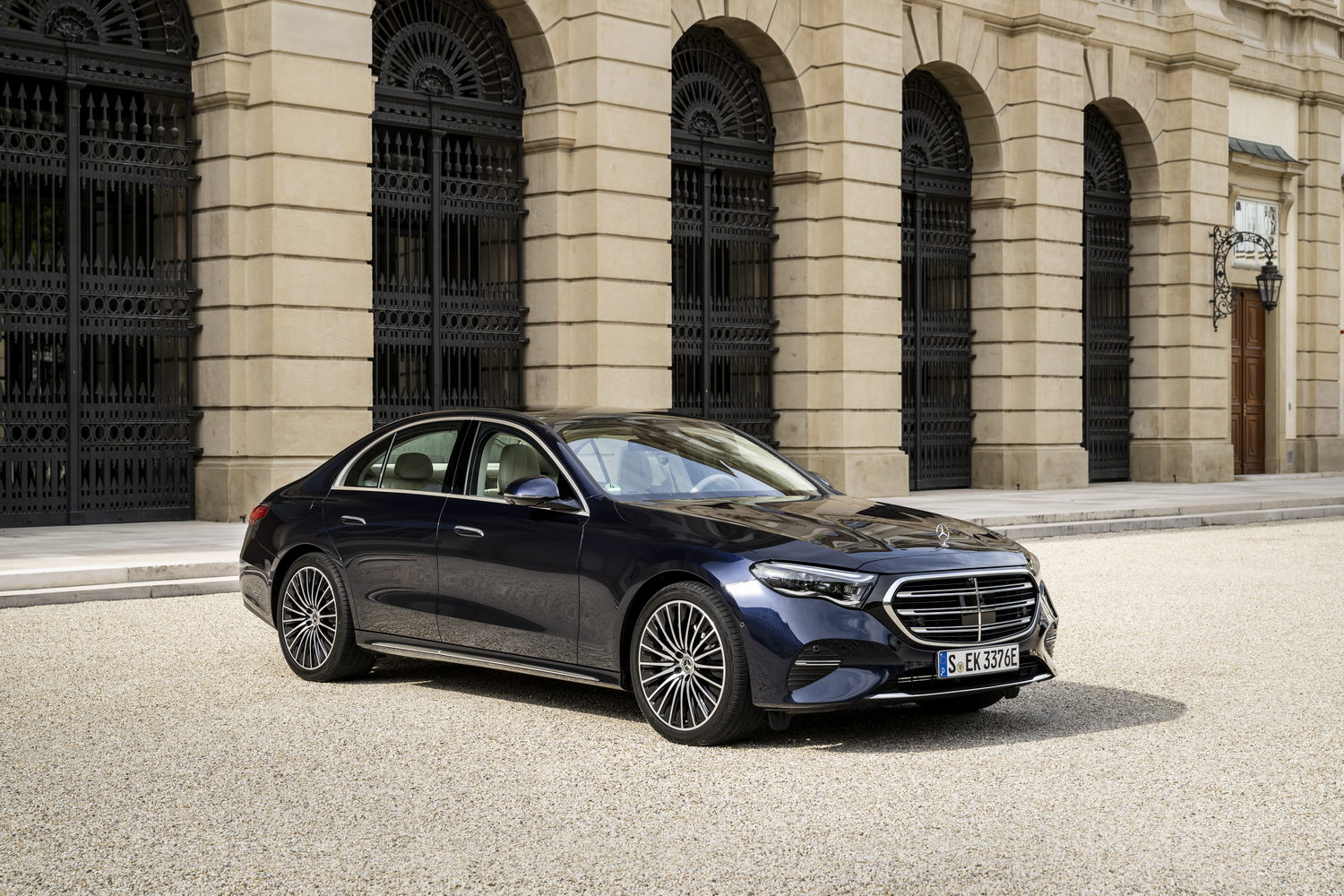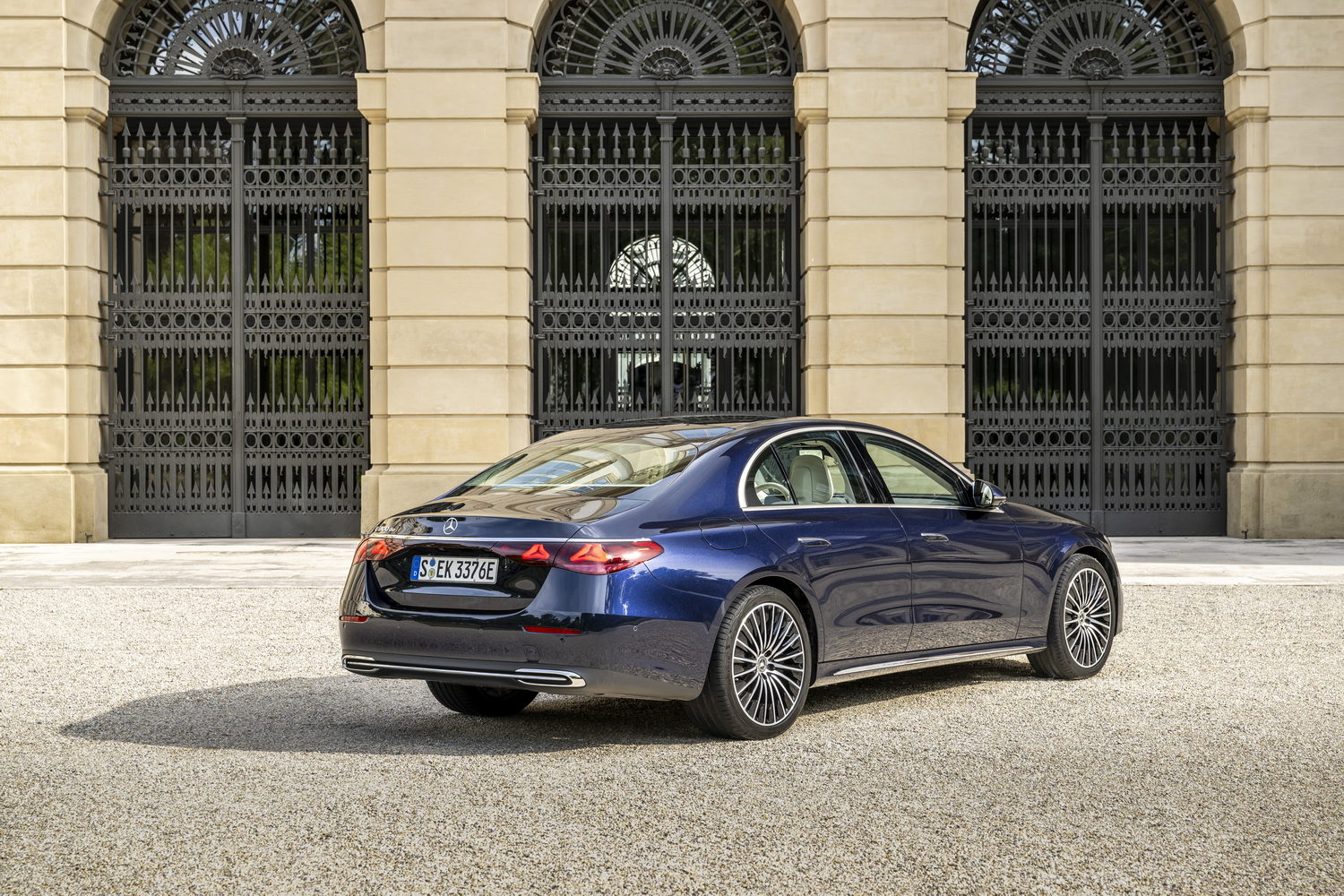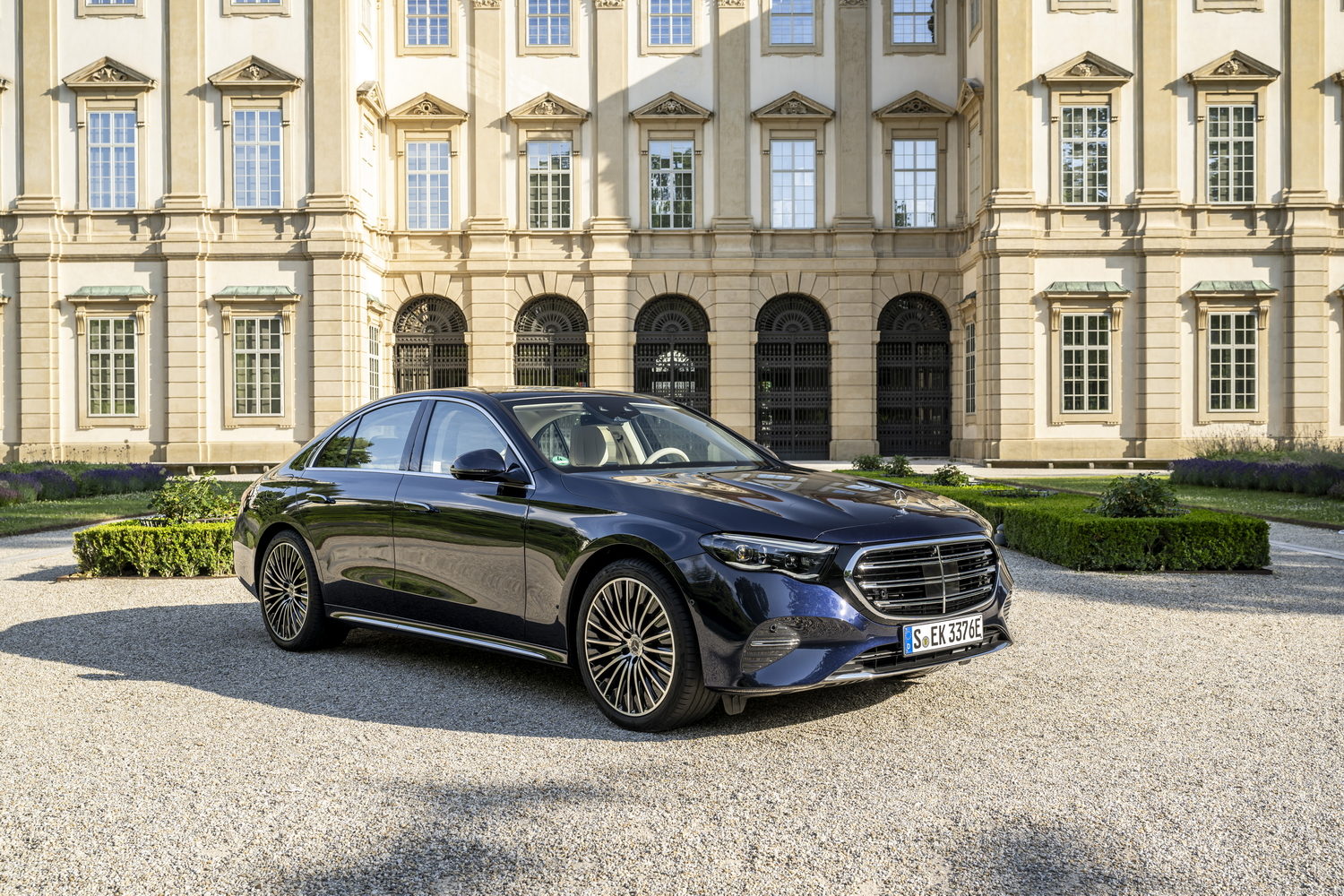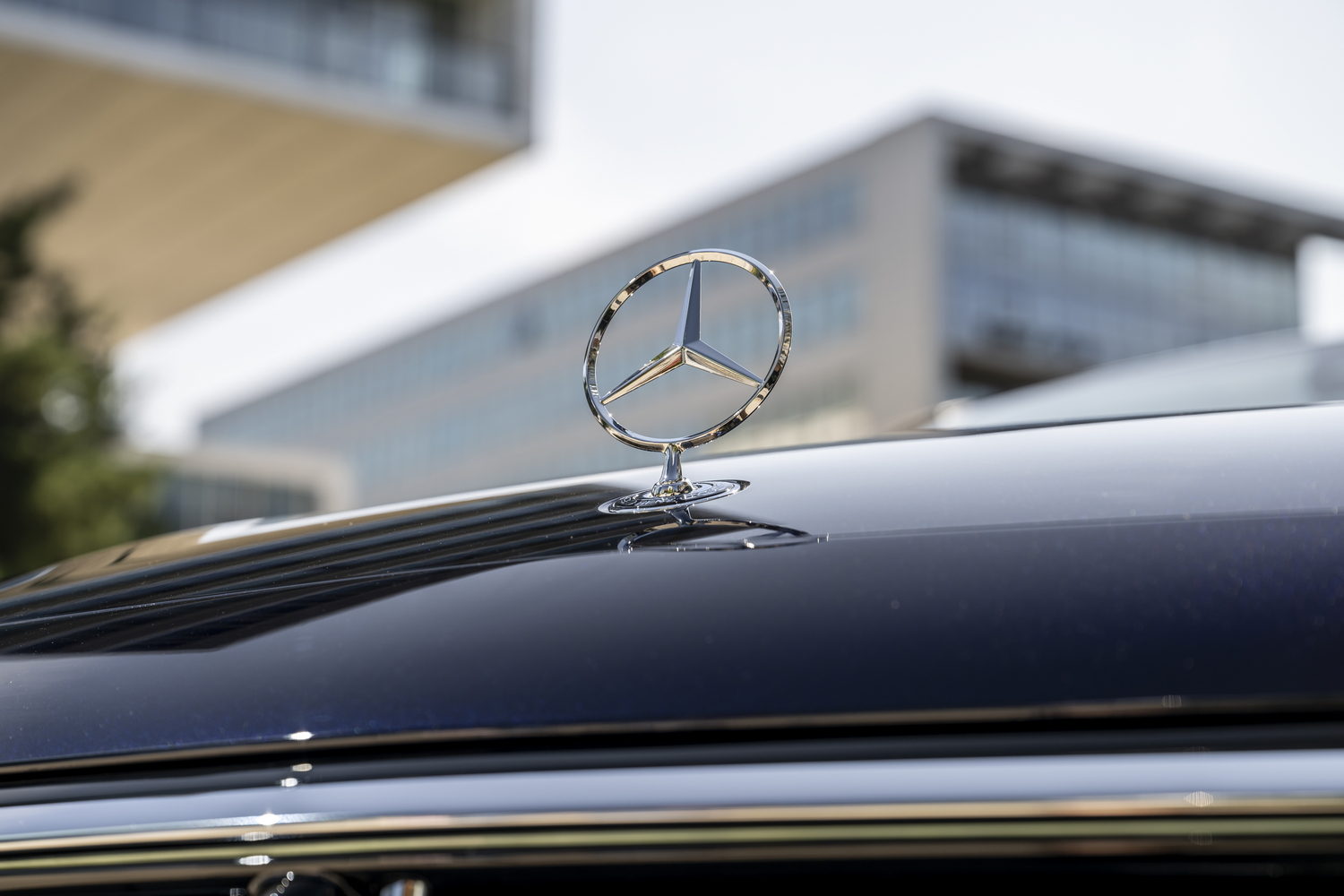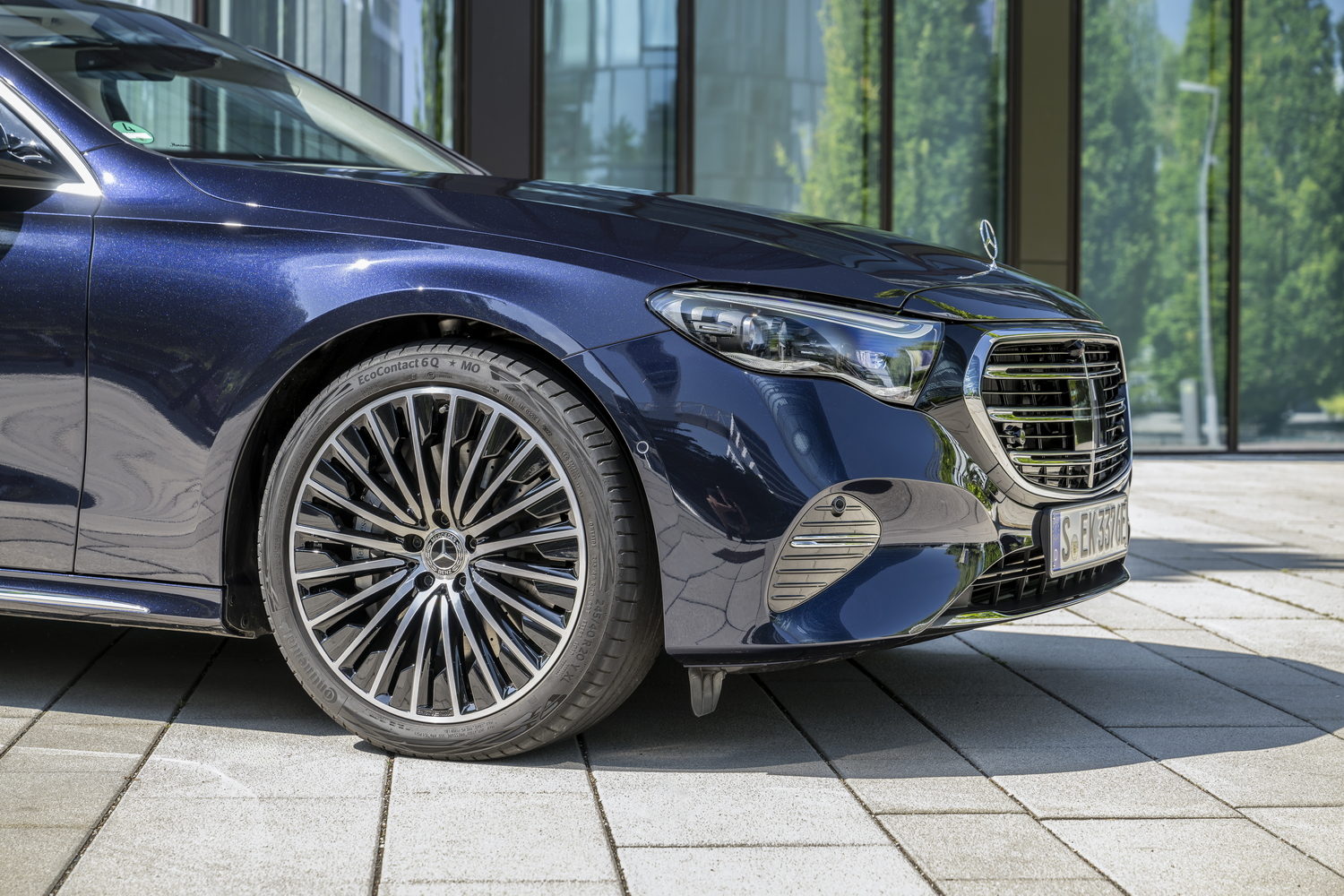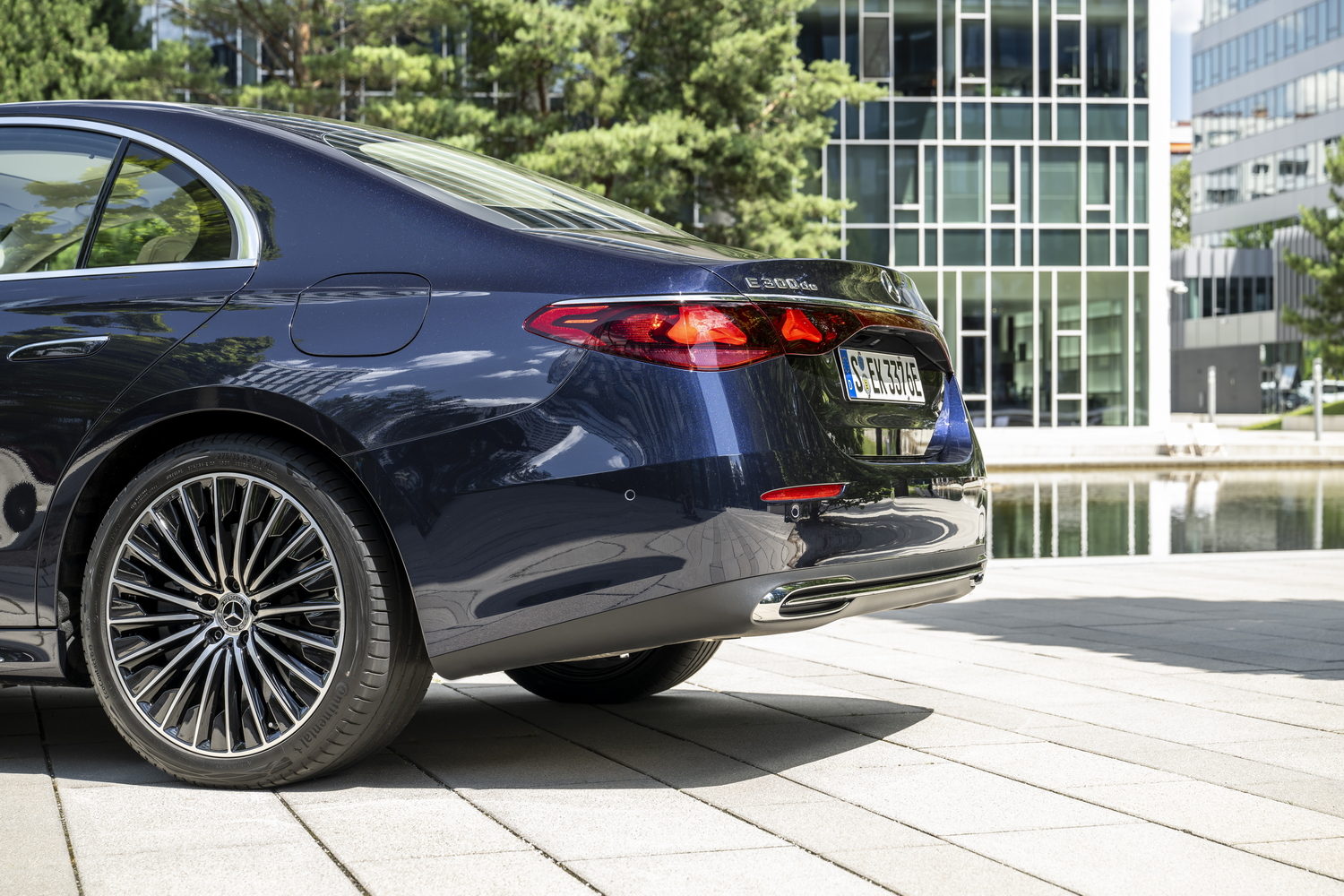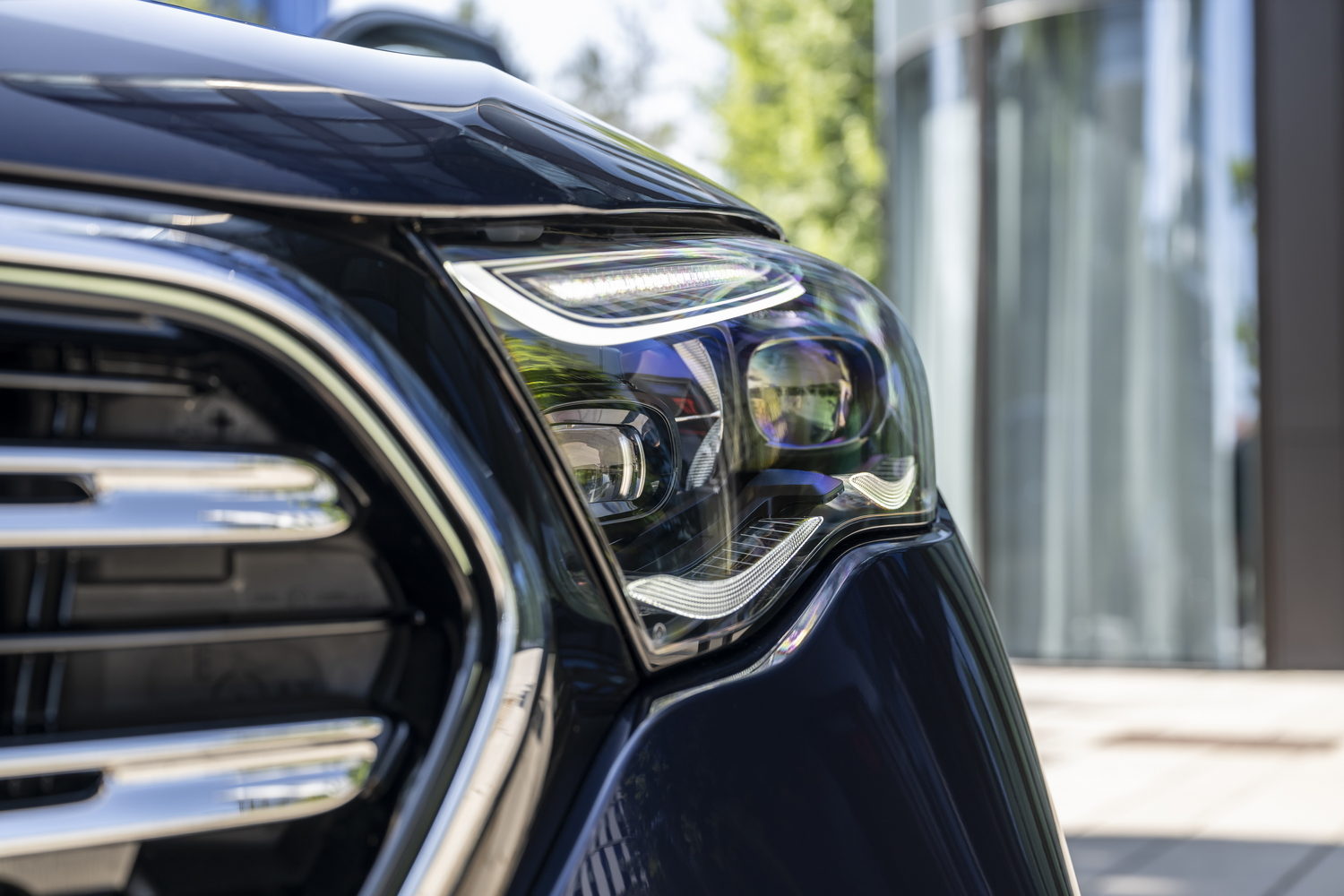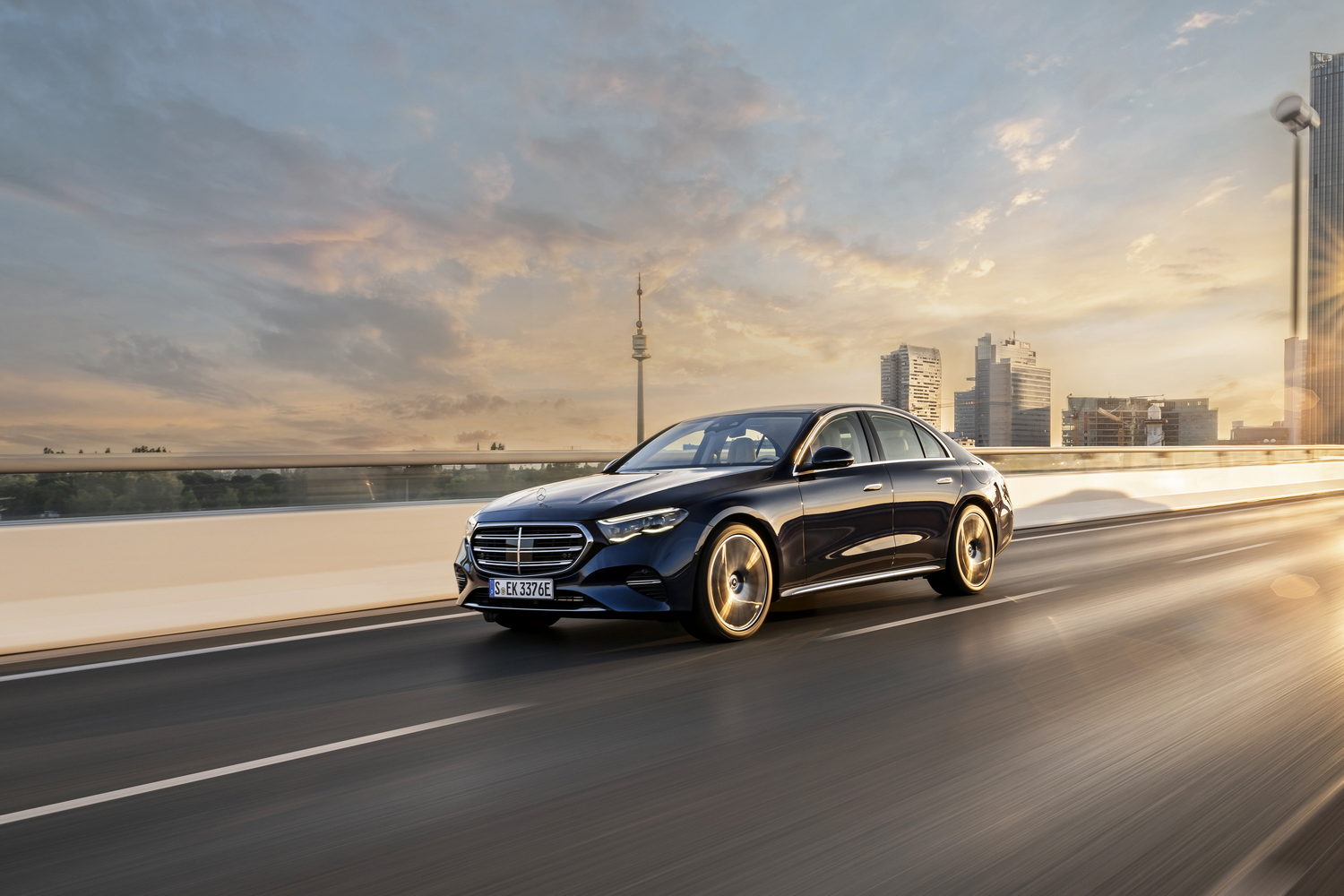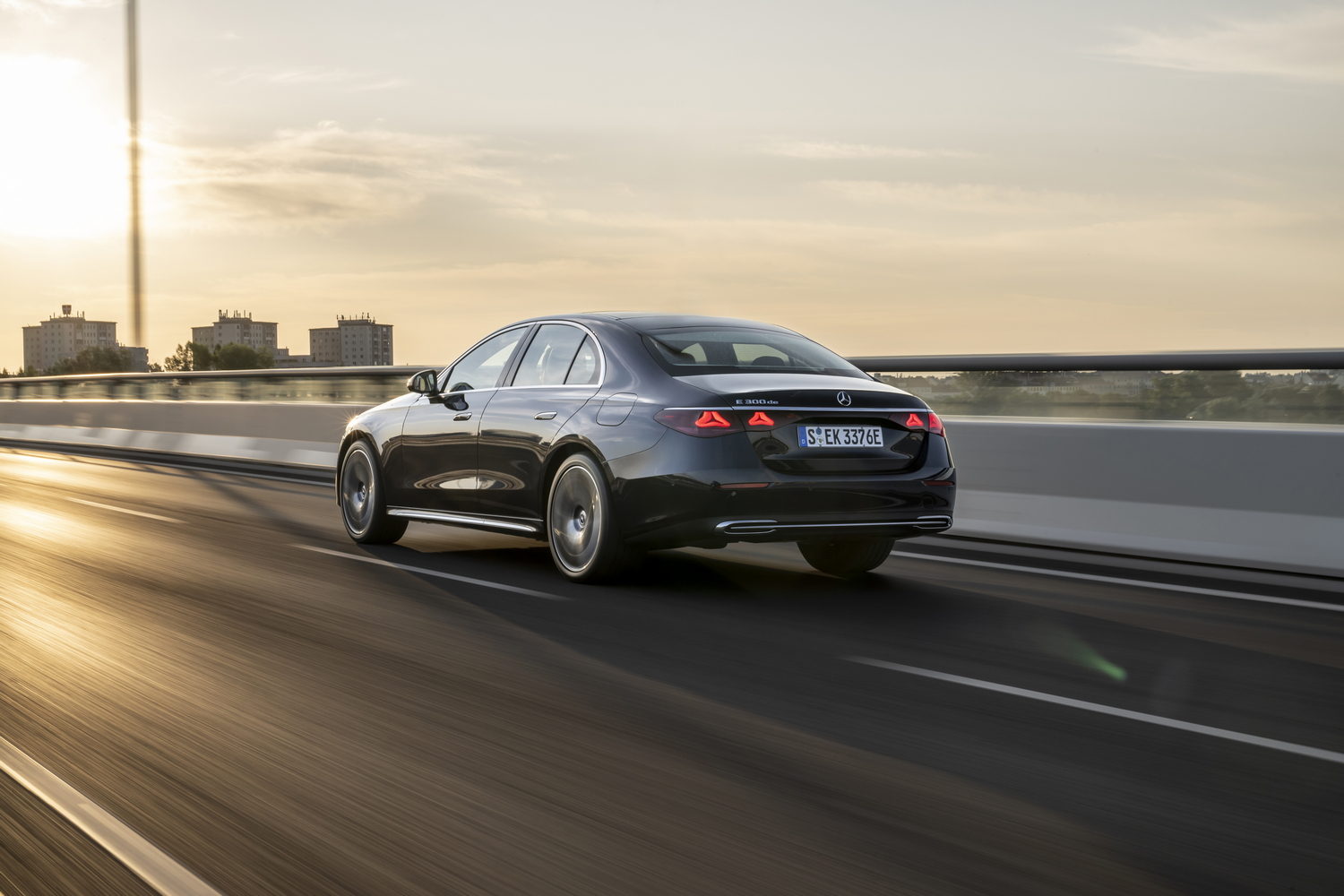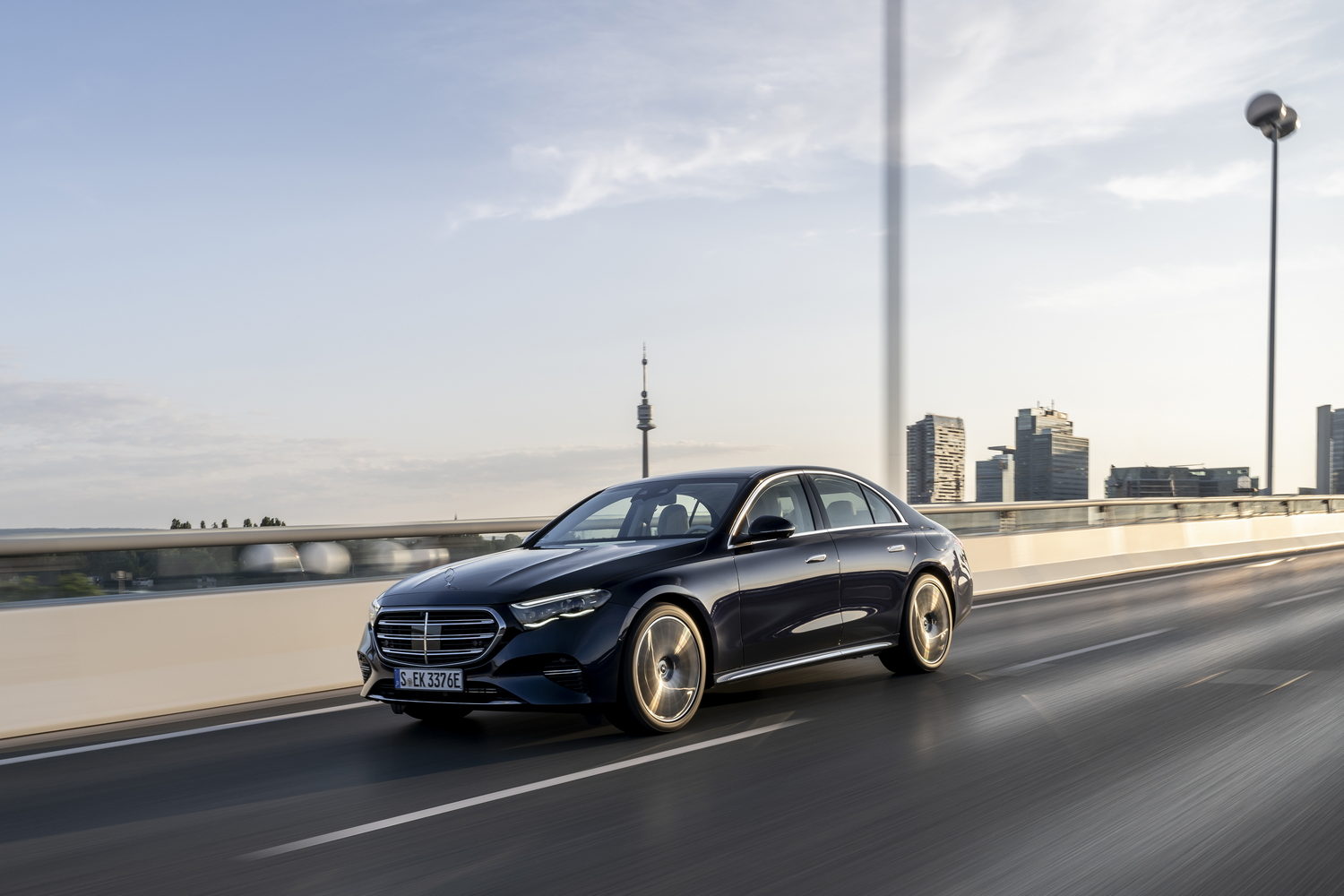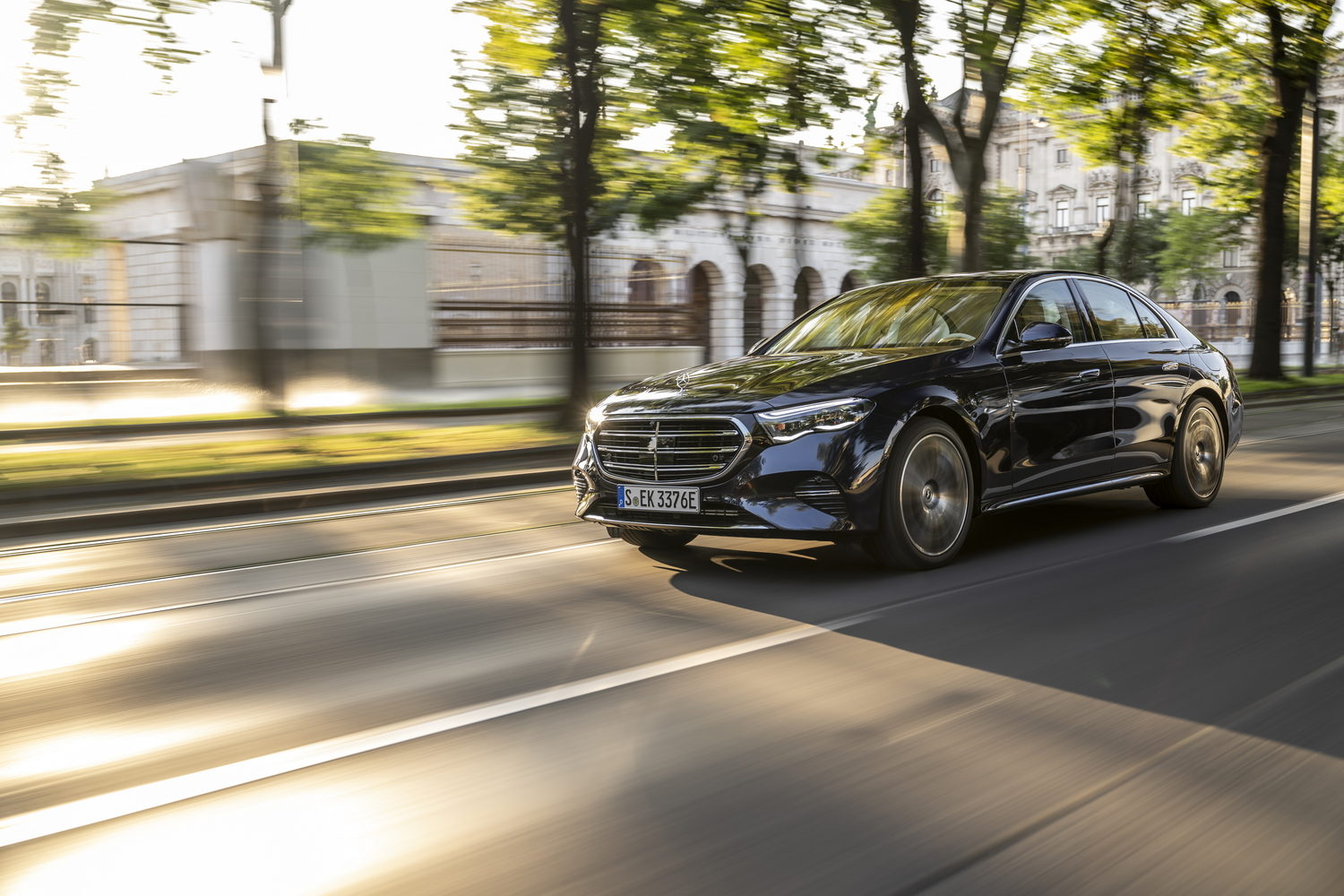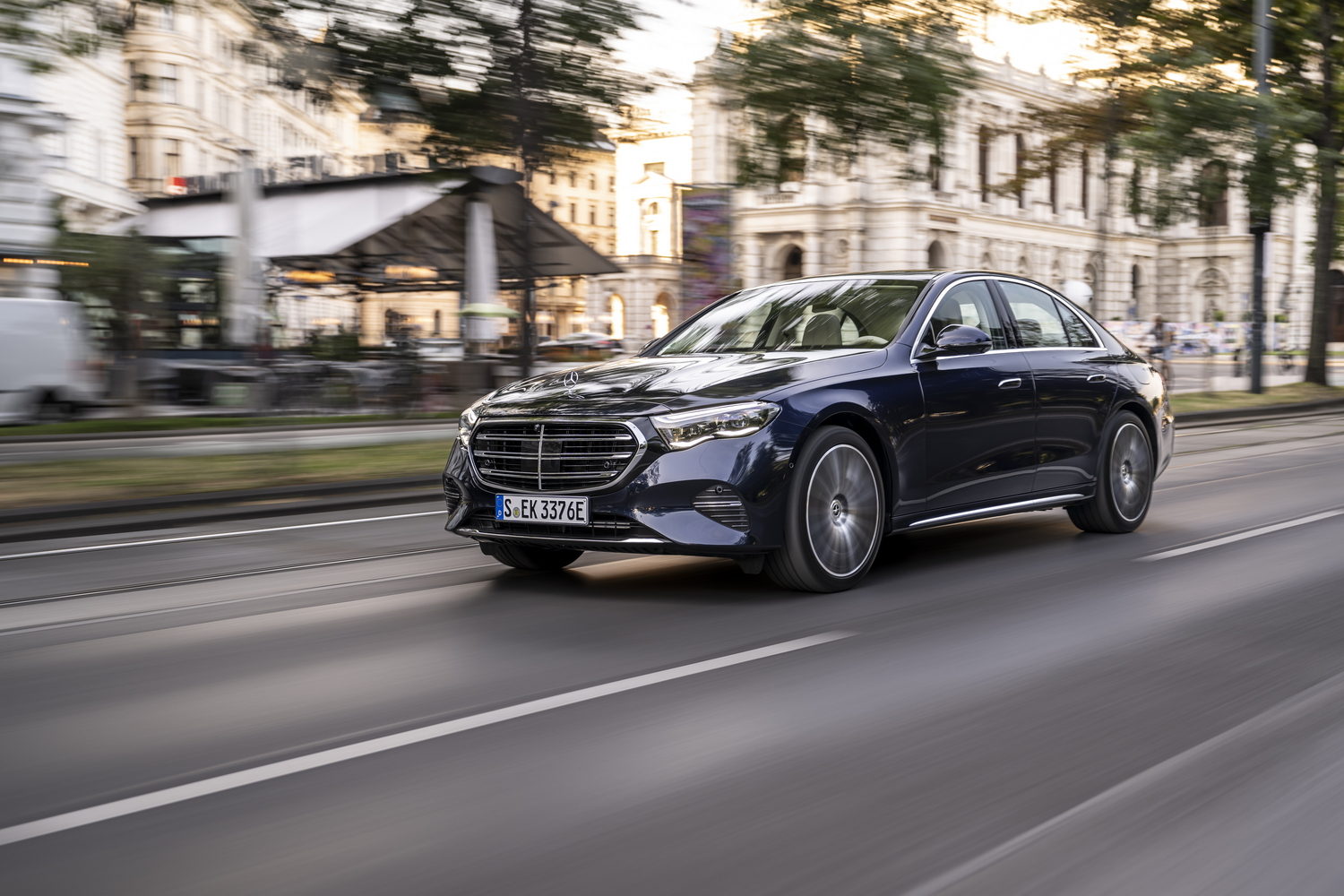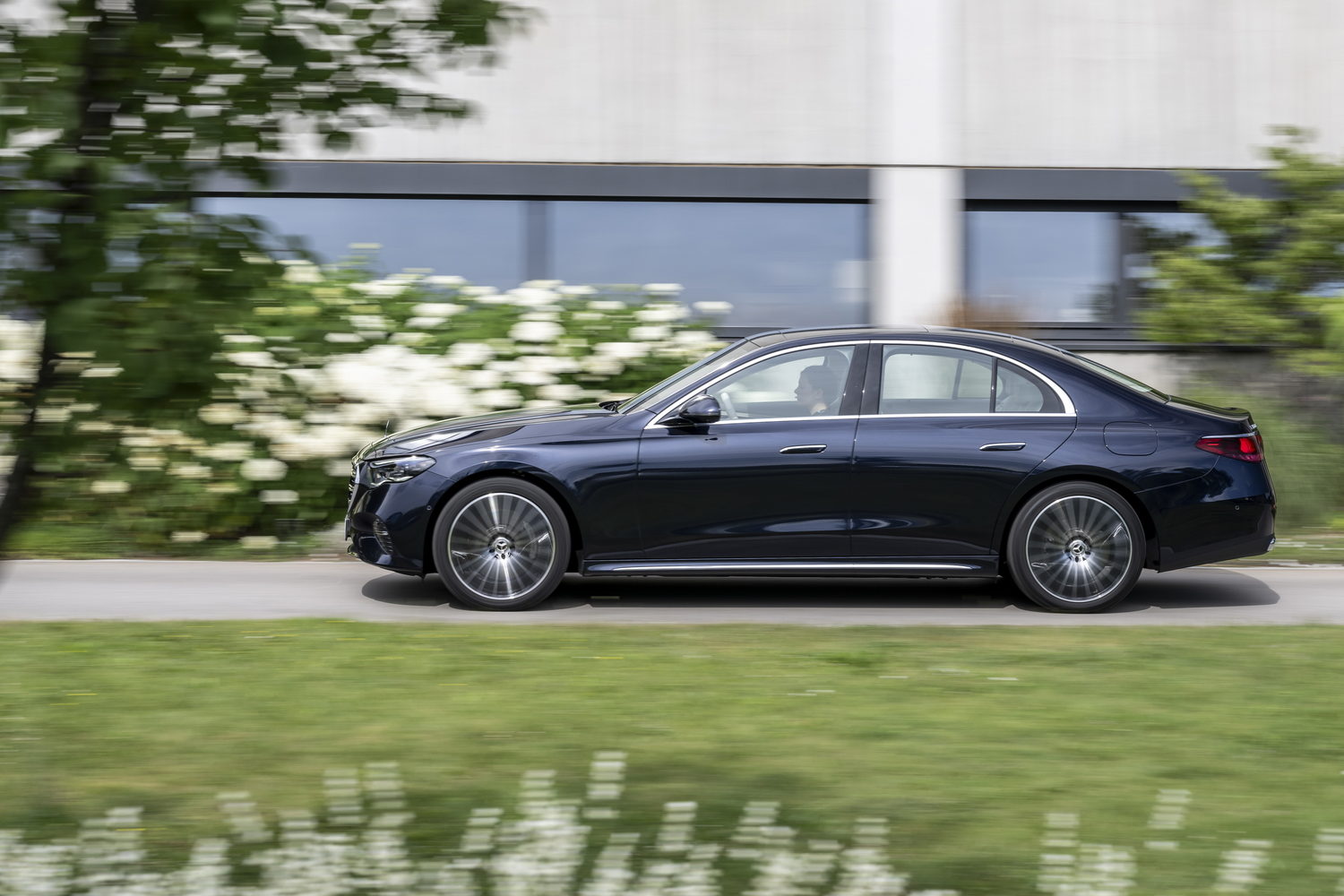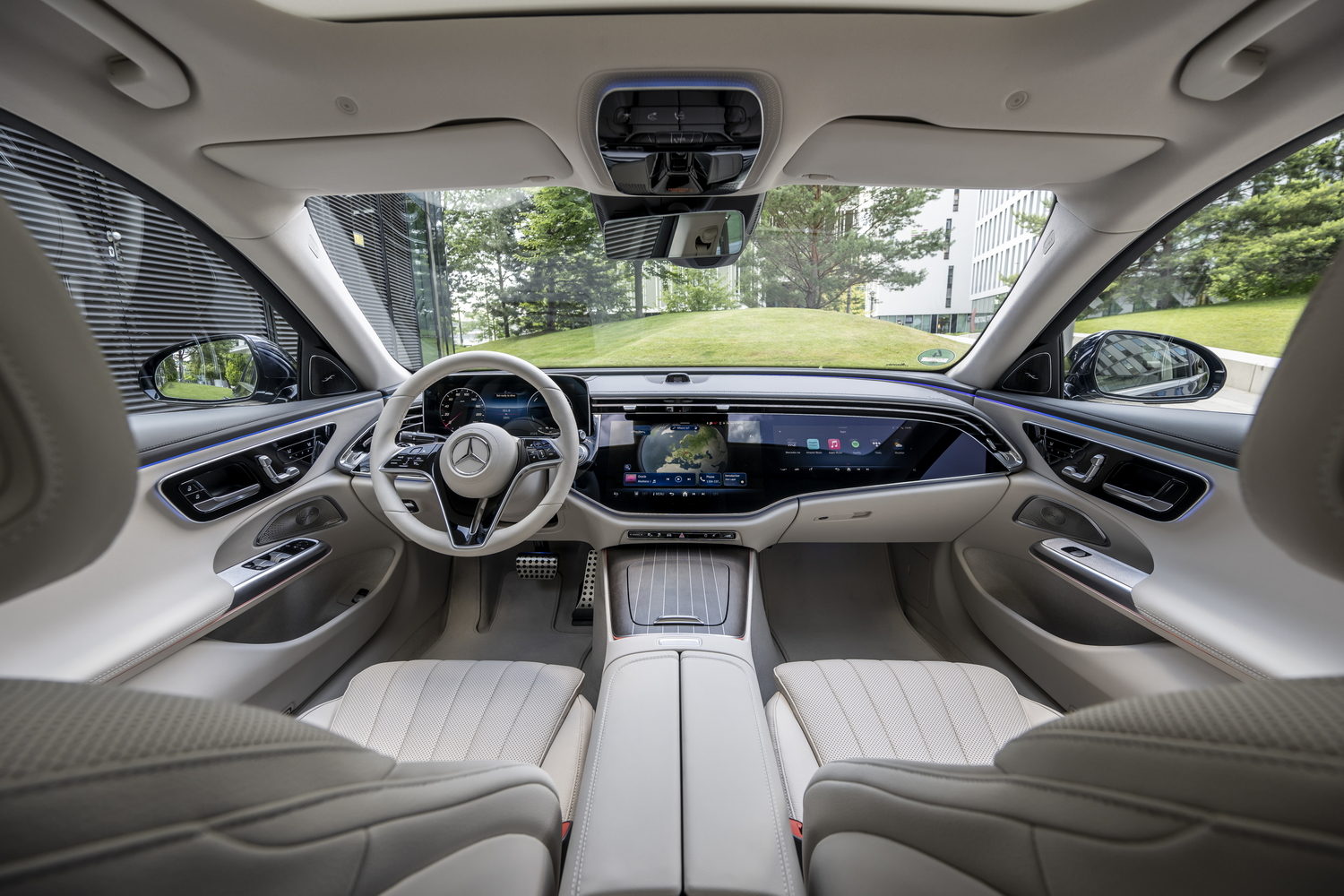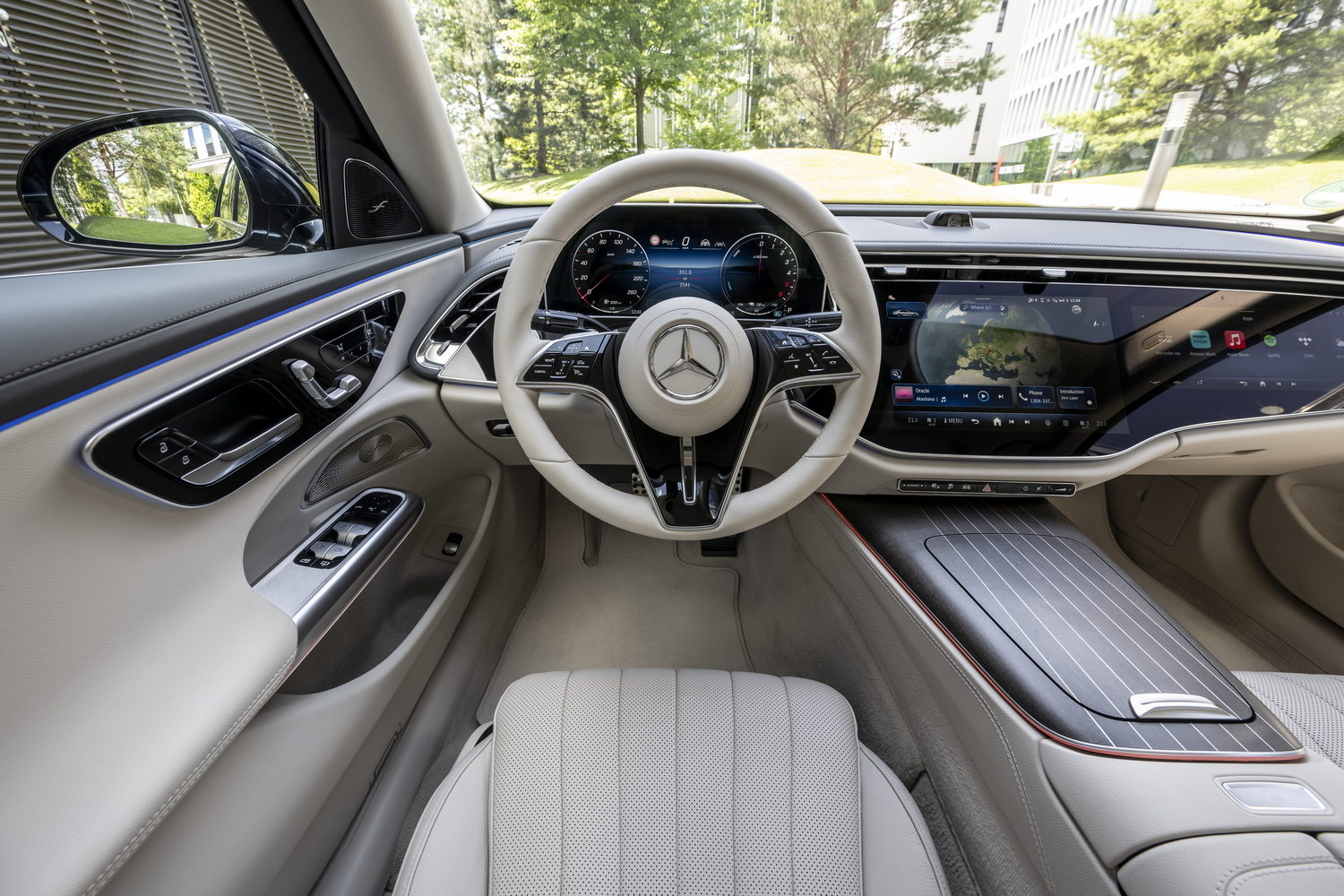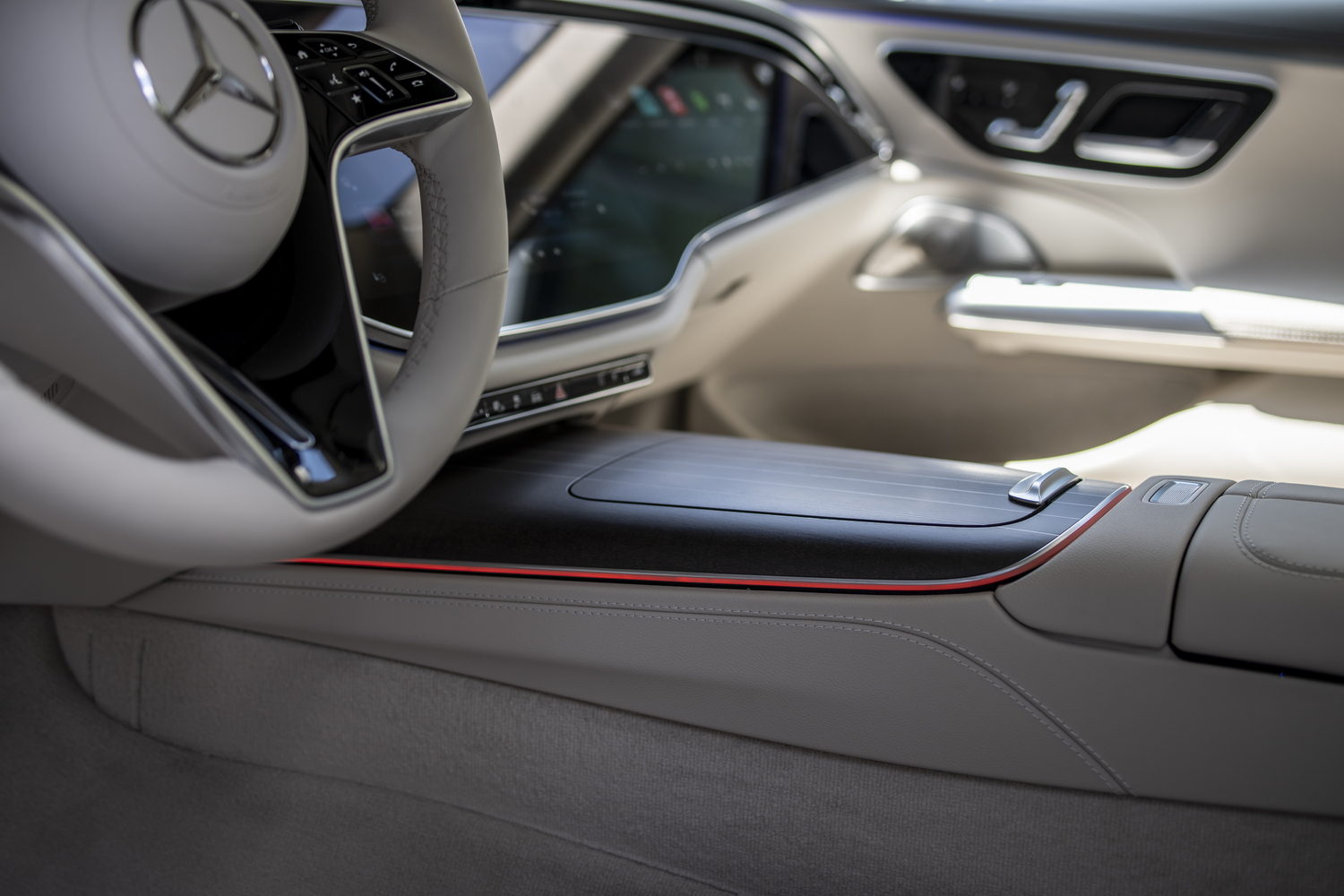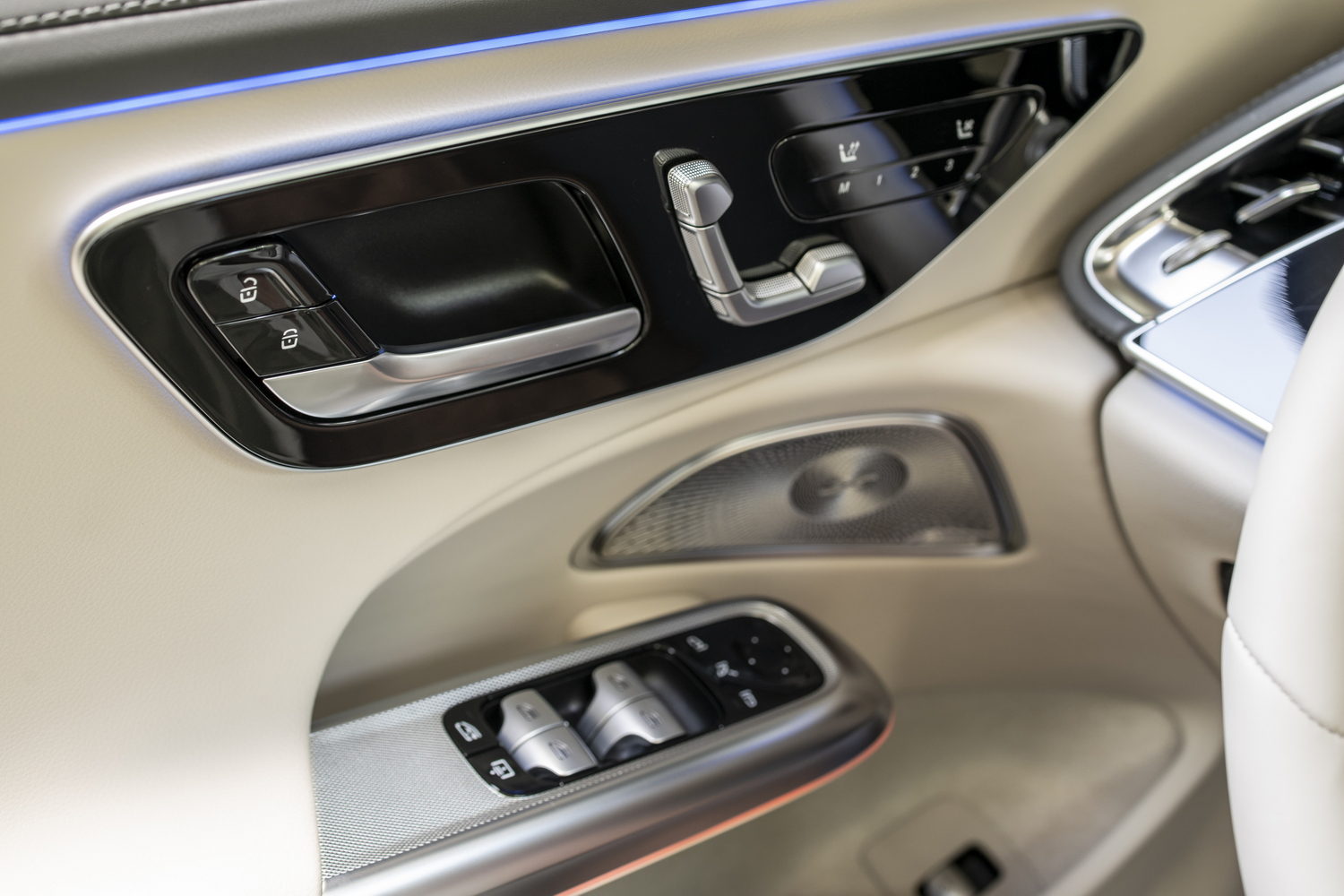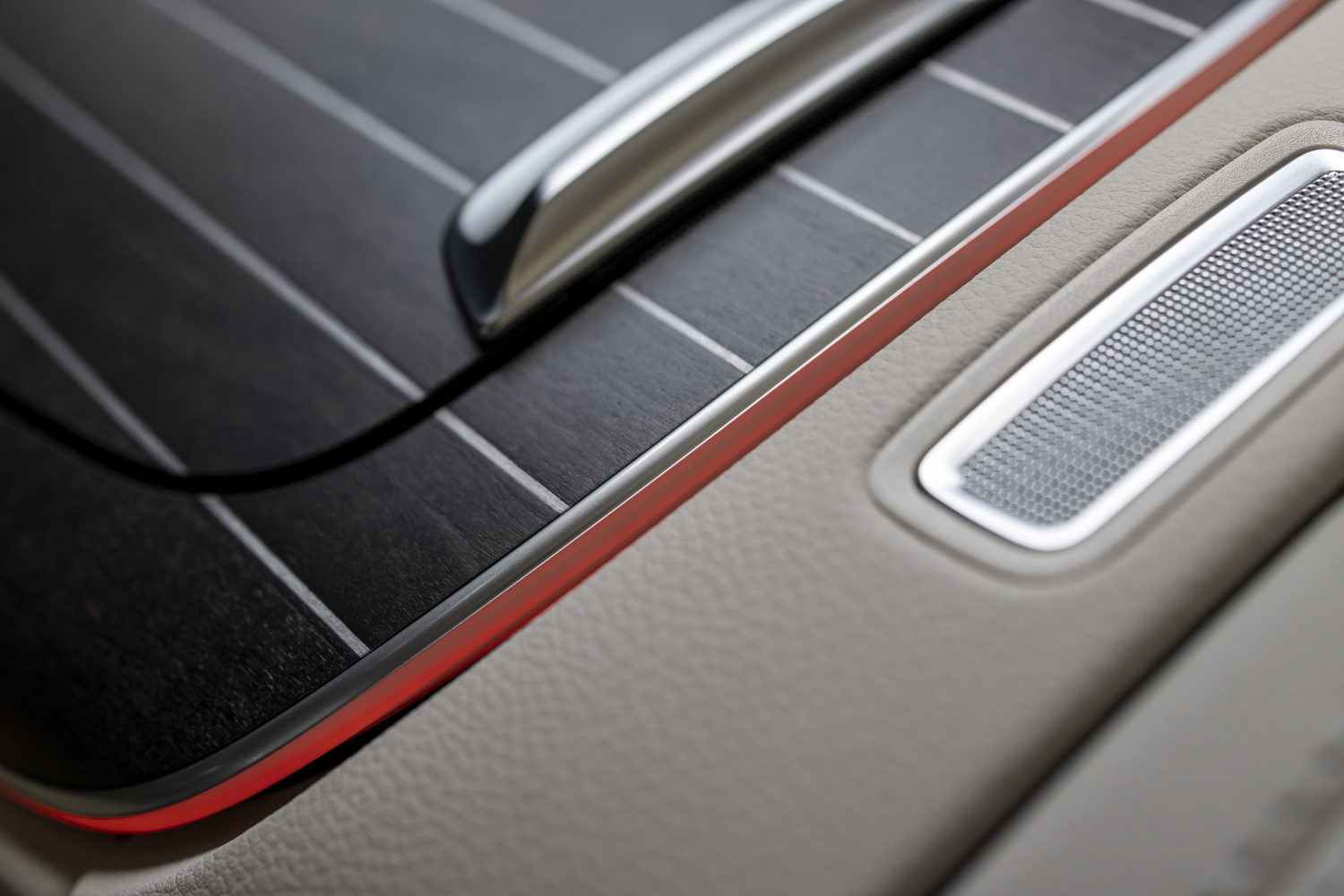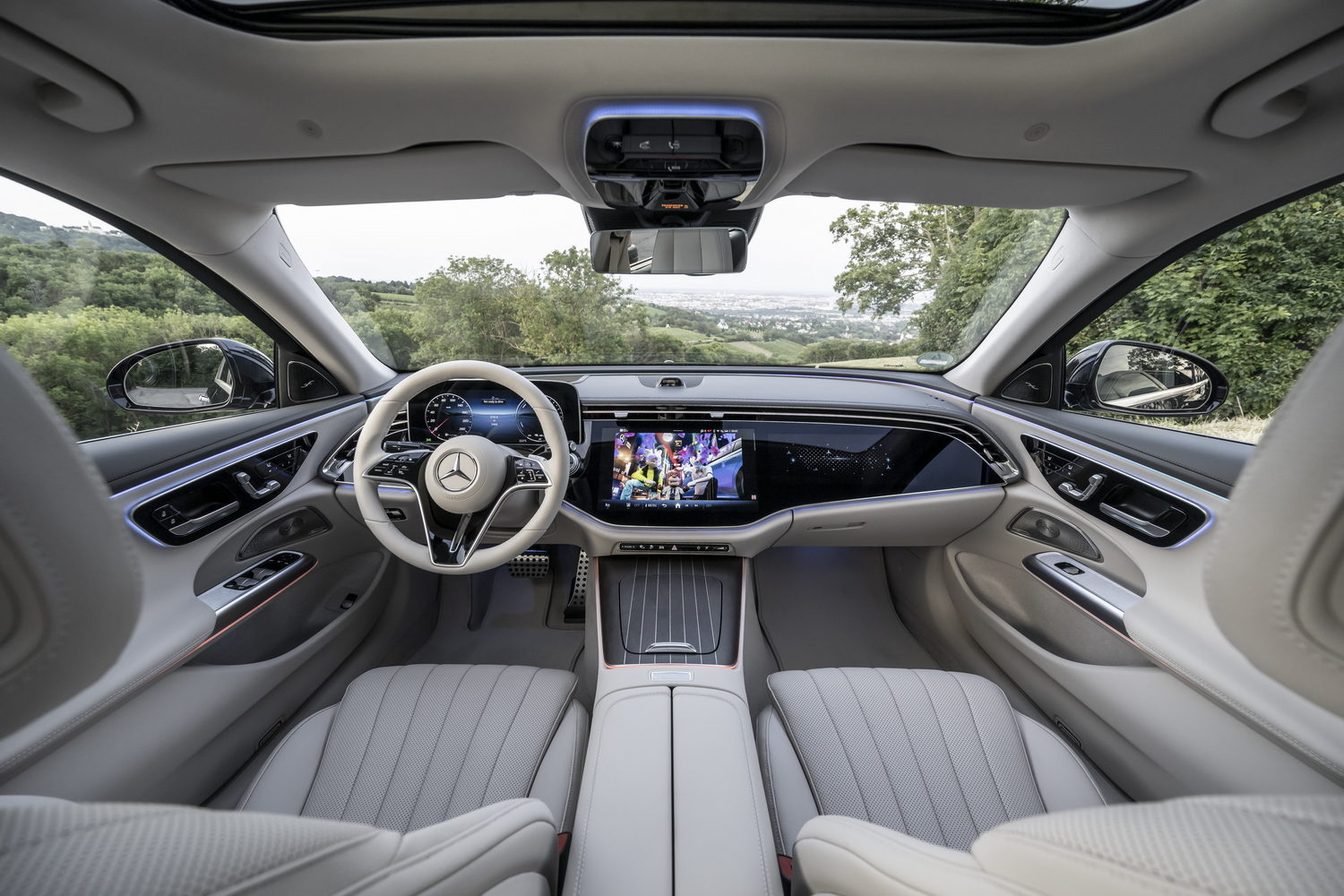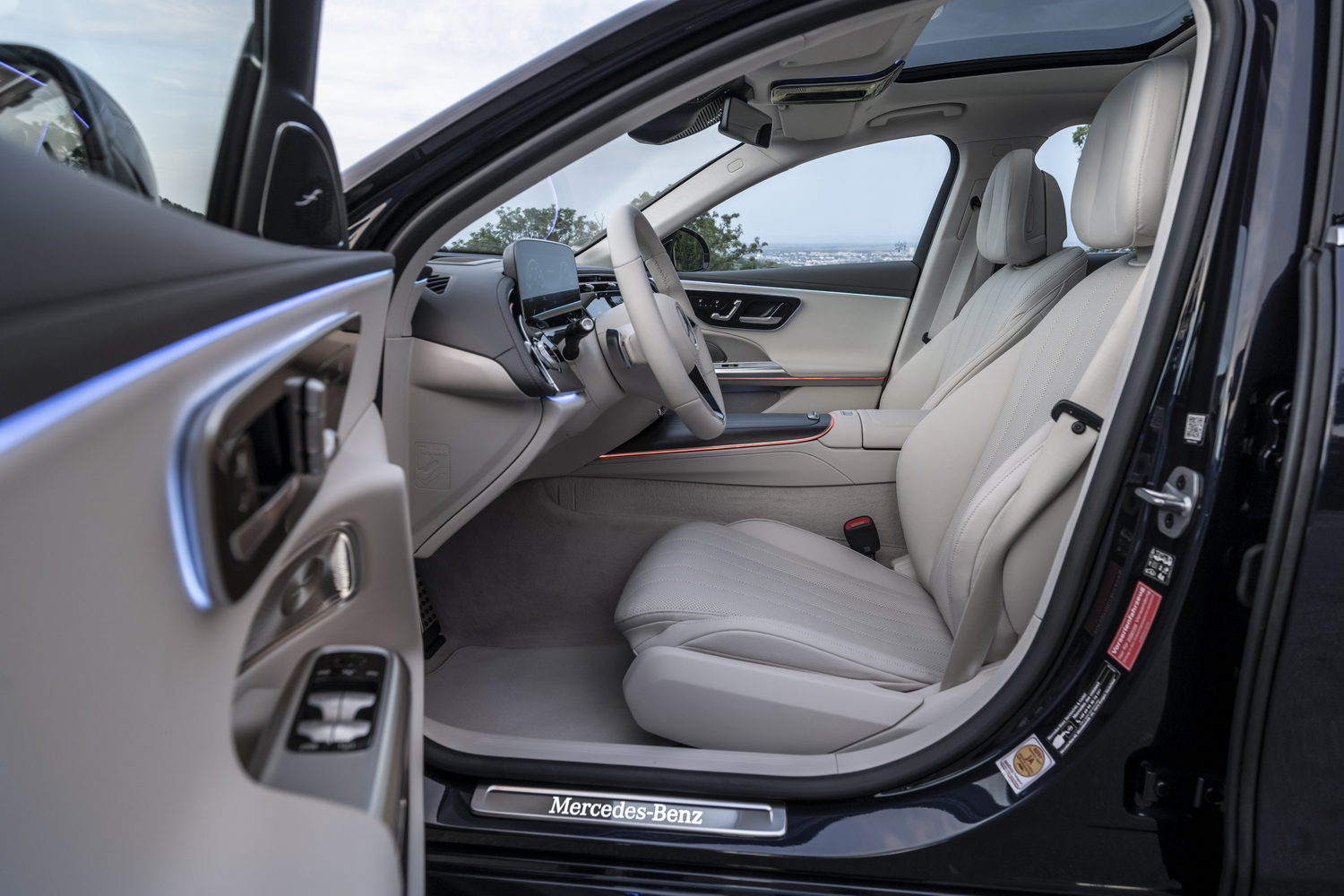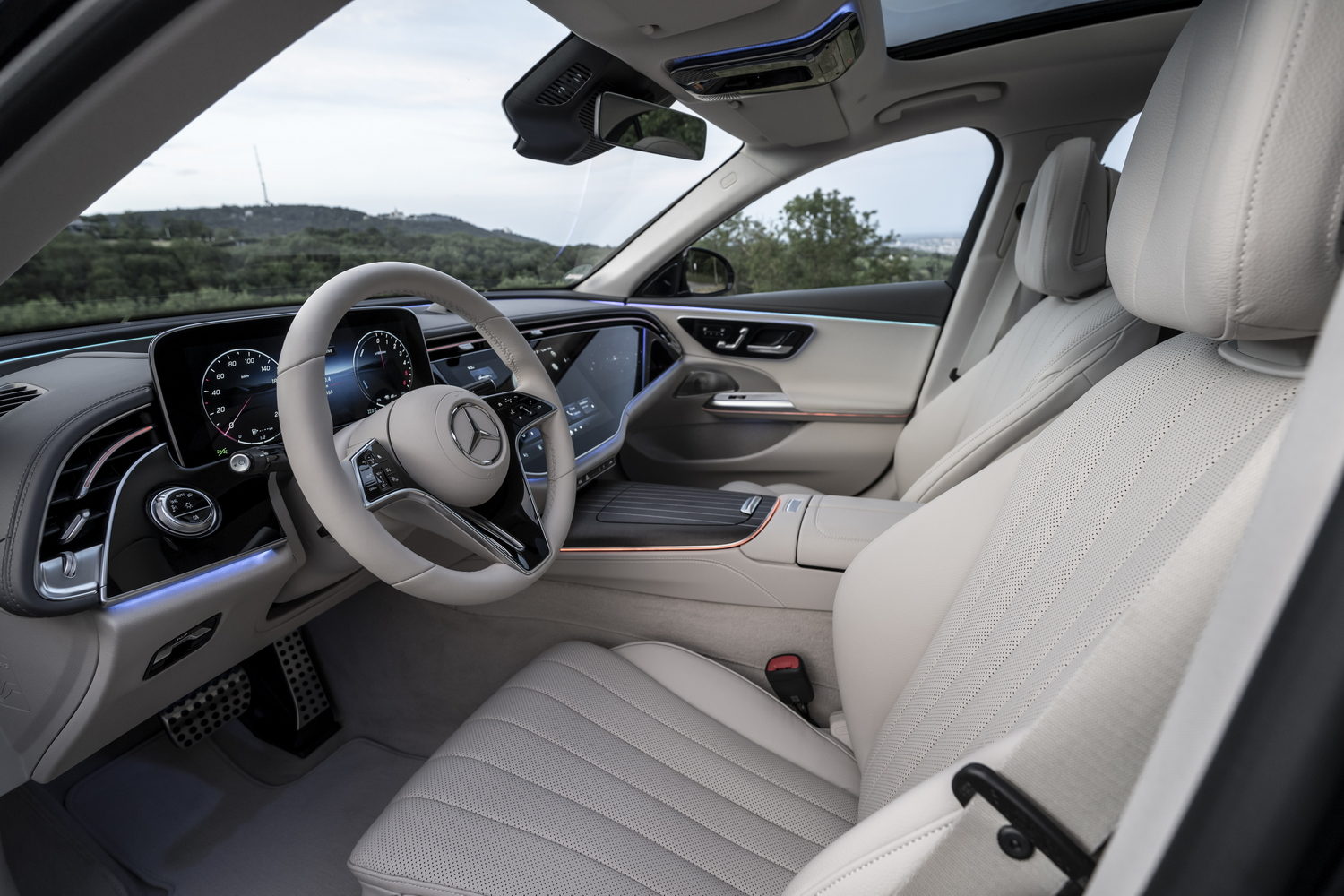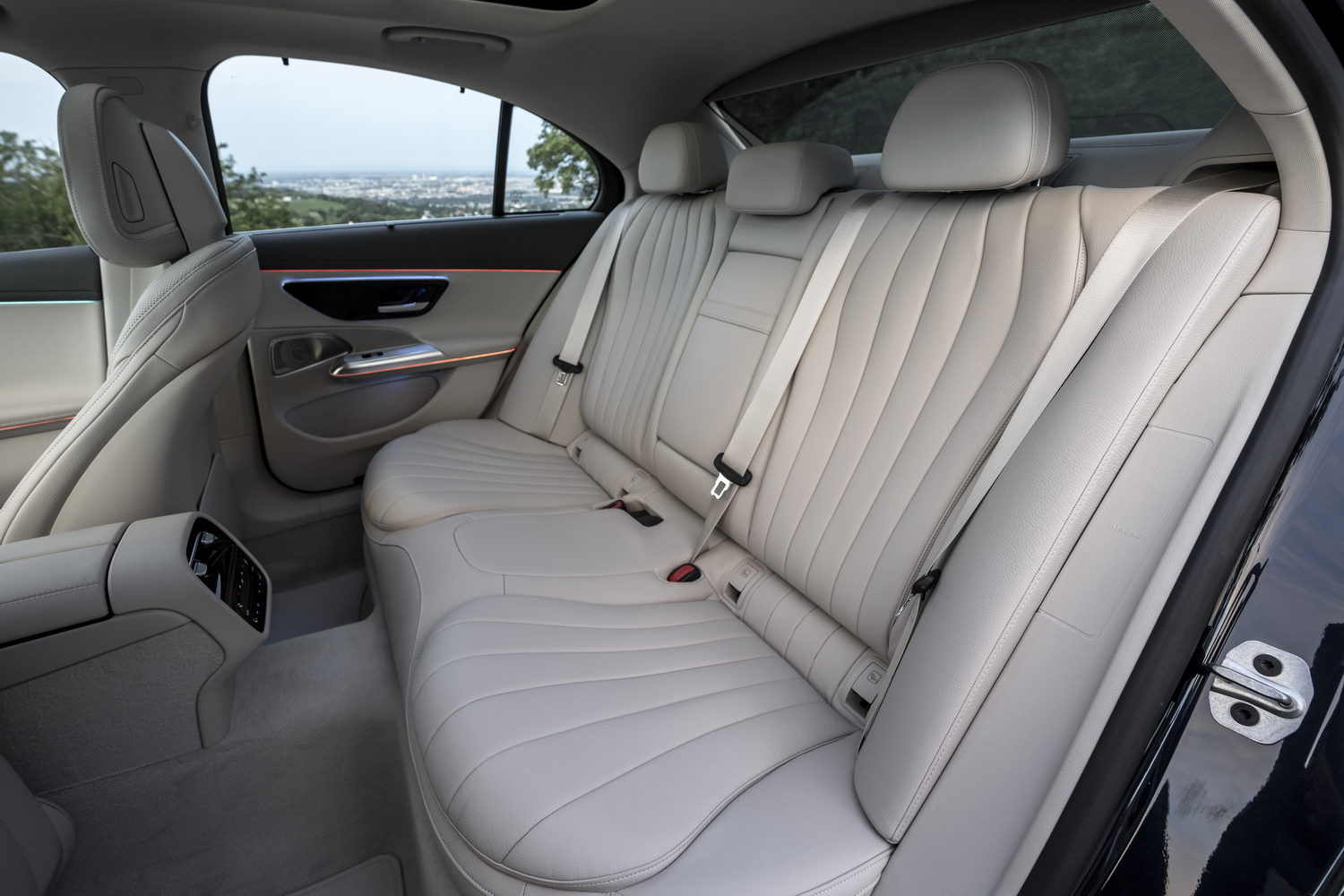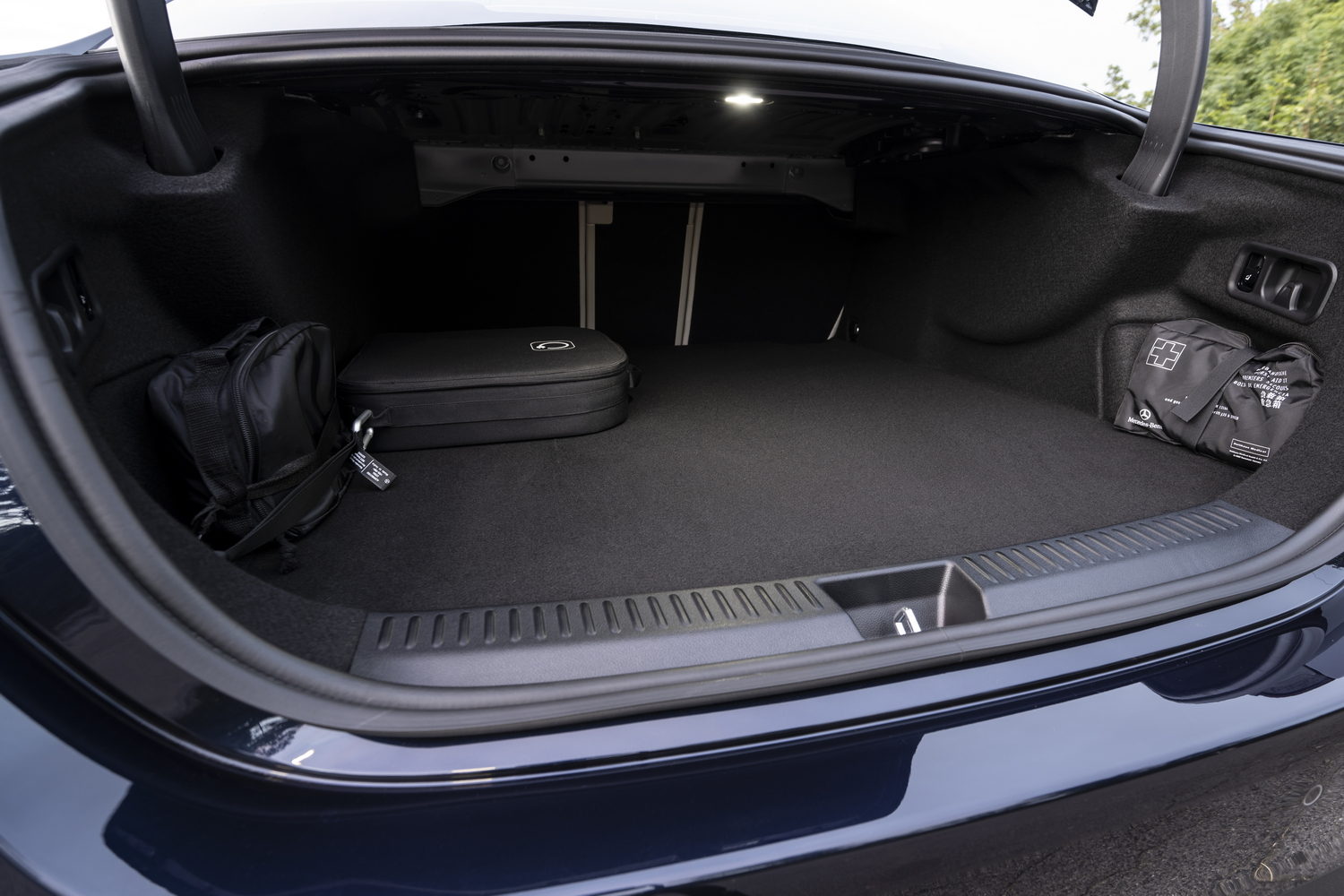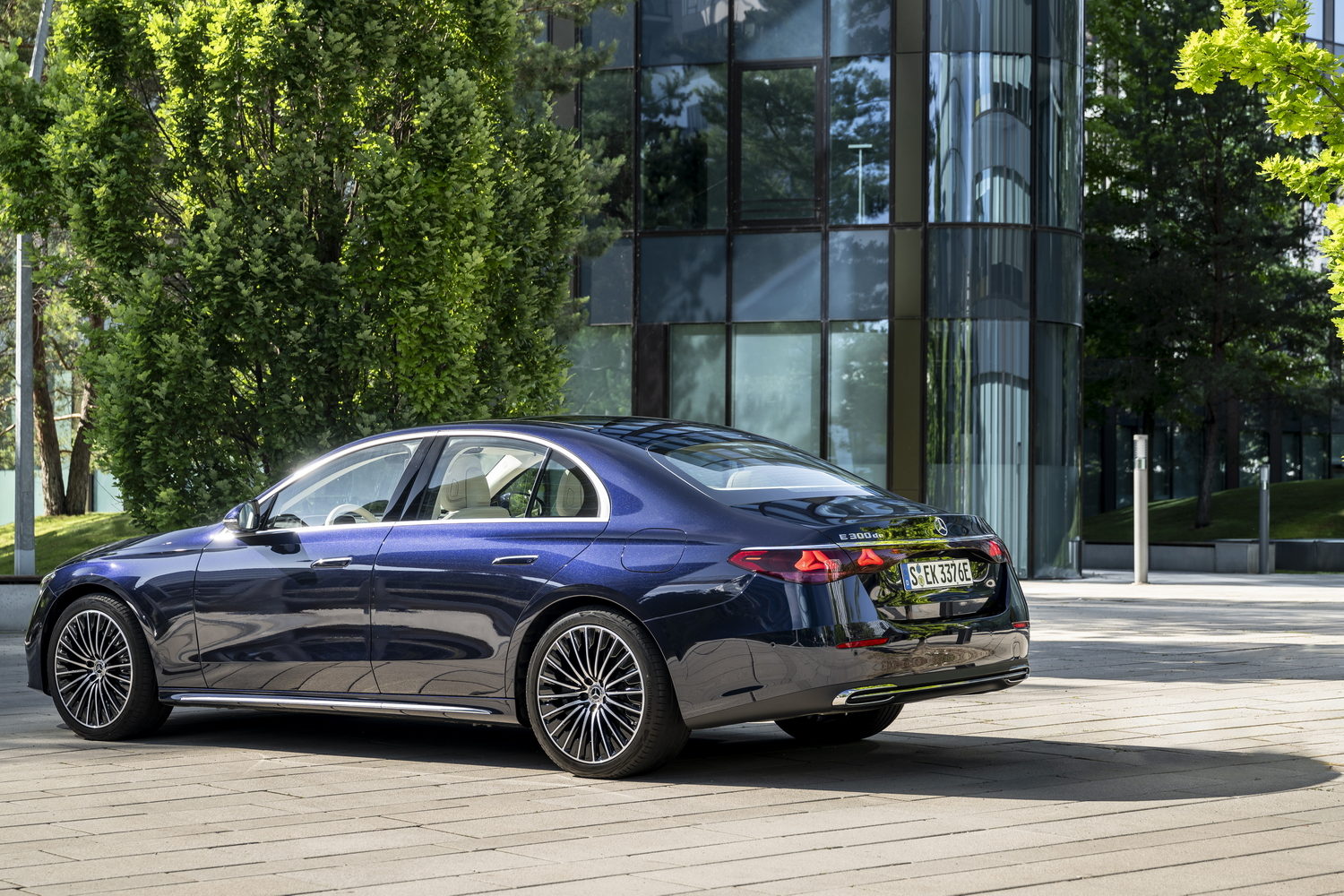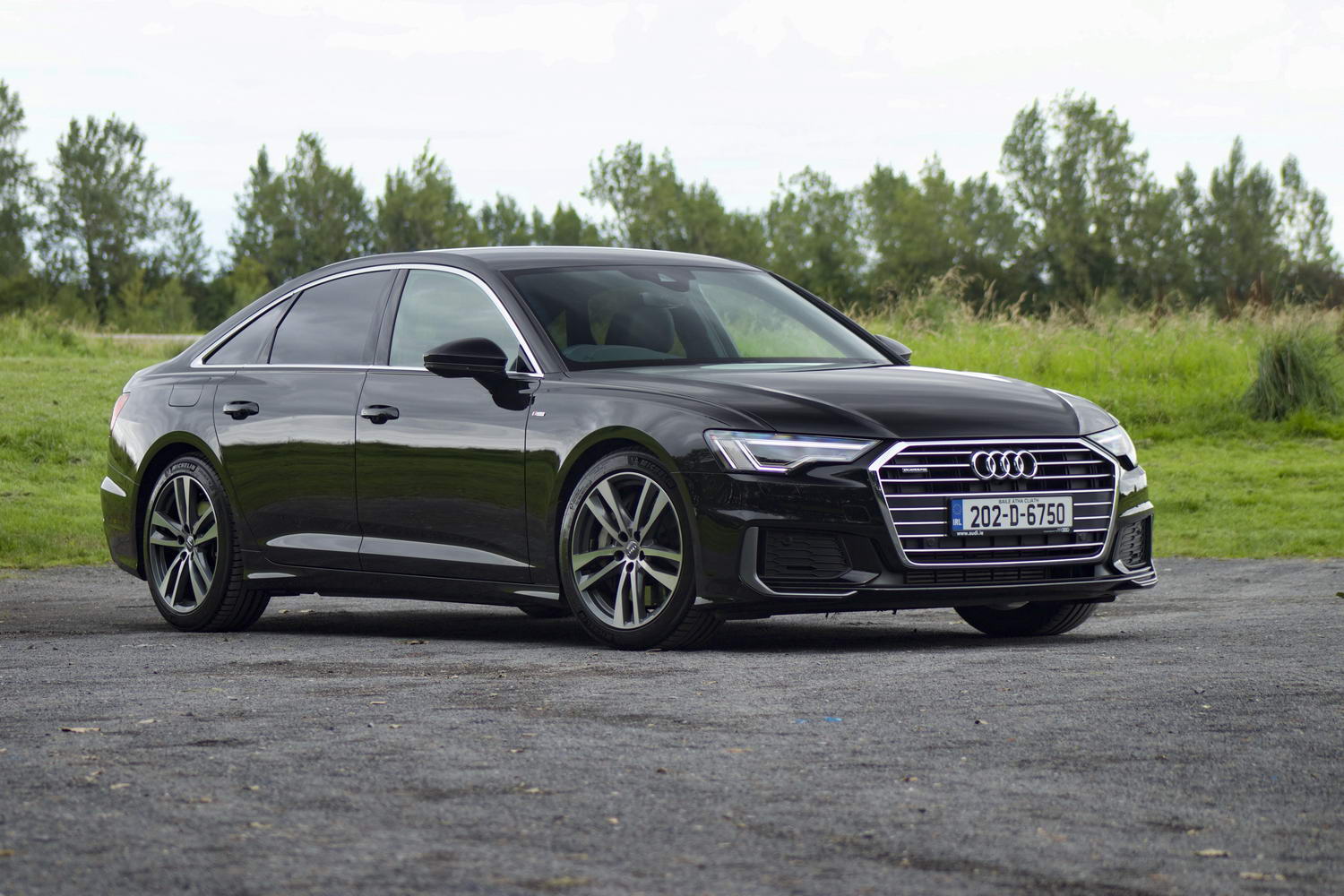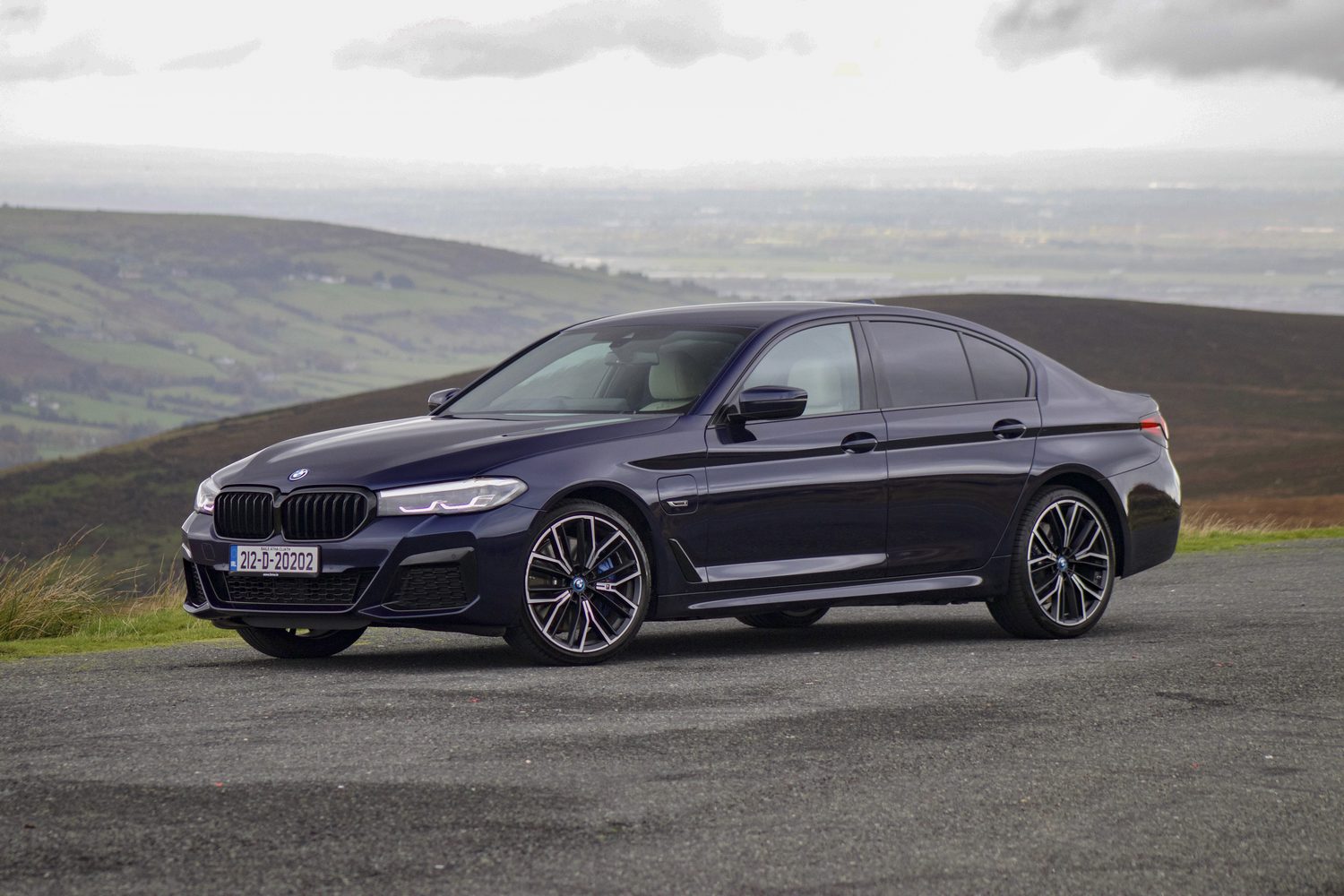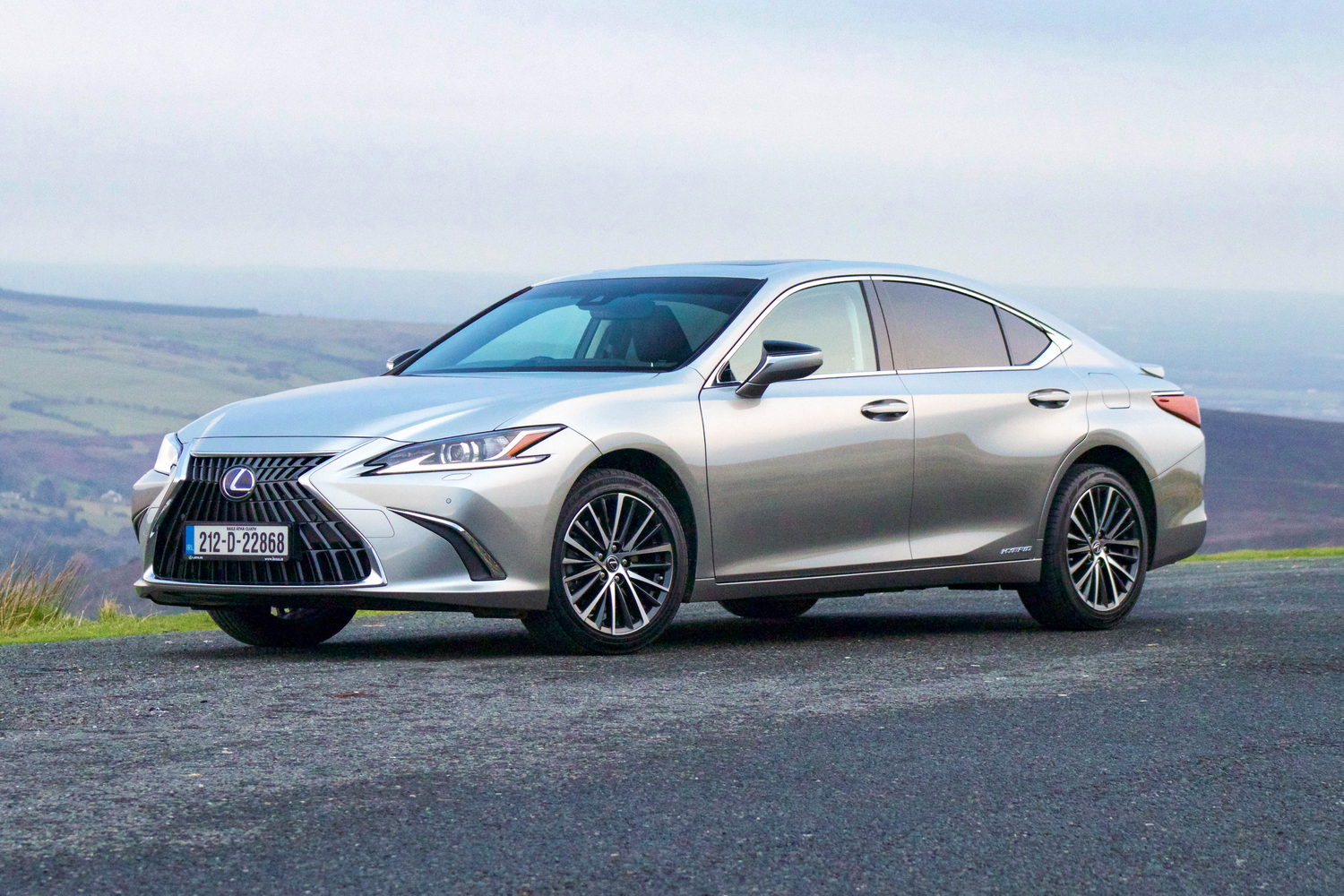Mercedes-Benz is making a two-pronged approach to carving out its share of the premium executive saloon market. With its EQE covering the fully electric side, that leaves the E-Class to take care of the combustion engine business, so the all-new generation - the W214 if you're into Mercedes model codes - will come with mild- and plug-in hybrid options featuring petrol and diesel engines. The styling is modern, the interior is luxurious and the drive is brimming with refinement, so long as you choose the right engine. Here we review the E 300 e, a petrol-powered plug-in hybrid.
In the metal
With the E-Class being such a core model for Mercedes, its design remains somewhat conservative and continues to slot into the role of younger sibling to the range-topping S-Class. The E-Class hasn't changed much in size but does gain a slight increase in wheelbase to the benefit of those sitting in the rear.
The front of the new E-Class is styled in such a way as to create a bridge between the combustion-engined cars and electric EQ models such as the EQE. The typical Mercedes grille comes in two styles, with the contemporary look - which is used for the AMG Line cars - featuring a single bar behind the company emblem. A classic grille reverts to the three twin-louvres and uses the upright logo emblem atop the bonnet. Models with this grille option also get chrome brightwork around the windows and along the base of the doors, whereas these details are gloss black on AMG Line cars.
The engineers and designers have attempted to make the E-Class as aerodynamic as possible to maximise efficiency. Details include the standard fitment of door handles that electrically retract to sit flush with the bodywork when the car is locked or driving. The wheels have also been optimised to look attractive while reducing drag, and plug-in hybrid cars are available with alloys of up to 20-inch diameters.
You see the most apparent similarity with the S-Class from the rear-quarter view. That's where a cab-rearward design is more obvious, and the wraparound taillights show off its curves. Those rear lights carry two star designs on either side to remind anyone behind in traffic - especially at night - that the car in front is a Mercedes.
The standout feature of the new E-Class interior is the optional 'Superscreen'. Similar to the triple-display Hyperscreen that is available in the Mercedes EQS and EQE, this puts a large central touchscreen and a slightly smaller secondary display for the front-seat passenger behind a single piece of glass. It delivers the wow factor for sure, especially if you've not been in such a modern car before. The latest MBUX infotainment system provides a more intuitive experience than before, too. When nobody is in the front seat, the second screen statically displays an image of the car, like a screensaver. If the E-Class is ordered without the Superscreen, it retains a large central display but has an interior trim panel instead of the extra display. The driver gets a separate digital instrument display that can be configured in several ways.
Electric adjustment of the seats is via the usual door panel switchgear. Finding a comfortable seating position isn't difficult, thanks to the amount of adjustability available. Better still are the rear seats, at least the outer ones; these provide generous amounts of room and comfort. The legroom is more than adequate, as are the head- and elbow room due in part to the small wheelbase extension.
The plug-in hybrids don't compromise on rear passenger space but get less cargo capacity in the boot, measuring 370 litres versus 540 litres for the non-plug-in models. Thankfully there is now a flat load floor, unlike its predecessor, which had a pronounced and awkwardly shaped step due to the placement of the high-voltage hybrid battery underneath.
Driving it
Officially, the 25.4kWh hybrid battery can provide as much as 115 kilometres of electric driving, and the E 300 e will always start its journey using electric power in its hybrid setting. The driver can select a fully electric mode that only uses the battery until it depletes its charge. The 95kW (129hp) electric motor also produces 440Nm of torque, so driving on electric power never leaves the car feeling burdened or lacking in performance. Even in the hybrid setting, it will remain in its silent electric mode as often as possible, awakening the 2.0-litre petrol engine only if the accelerator pedal is firmly pushed to the floor. Quick overtakes are a cinch if you do that.
The sound from the four-cylinder petrol engine isn't going to get your pulse racing like an in-line six or V8 might, but the powertrain does its best performance utilising both motors when the combined maximum outputs are 312hp and 550Nm.
Power goes to the rear wheels as standard, and the nine-speed automatic gearbox is as smooth as you'd like, shifting gears imperceptibly most of the time. A 4Matic all-wheel-drive transmission is also available, though this does come with a slightly shorter electric driving range, but only by a few kilometres.
Driving in the electric mode perfectly highlights the build quality of the E-Class's interior as you travel in near silence. Much work has gone into tuning the aerodynamics and aeroacoustics, so areas such as the wheel arch linings, door seals and cavities throughout the structure have been enhanced, covered or filled to prevent any unwanted sound from seeping into the cabin, and it shows.
The optional Airmatic air suspension adds another layer of luxury and refinement to the E-Class. Through bends there isn't any body lean of note to complain about, and the quality of bump absorption is at a level consummate with the brand image. This car is more adept at making longer distances melt away than chasing down apexes. The steering doesn't provide detailed levels of feedback, but the optional rear-wheel steering is tremendously helpful in tighter confines. Wind and road noise cause little complaint either. If you're lucky enough to be travelling in the rear, you will arrive feeling relaxed and refreshed.
What you get for your money
Pricing for the new E-Class is still being ironed out, and Mercedes-Benz Ireland won't announce details until closer to the car's arrival in October this year. However, pricing is expected to increase over the outgoing model's.
Summary
Mercedes has moved the bar up for this latest generation E-Class, with a cabin that retains all of its classic traits and levels of refinement on the move that confirms its luxury status. While taxation benefits towards buying plug-in hybrids are gone, the potential for reducing running costs and local emissions is higher with this latest powertrain, and the extended electric range alone is much more useful. But it's the sum of its parts that makes the E 300 e so appealing, and it has narrowed the divide between it and the more opulent S-Class like never before.

